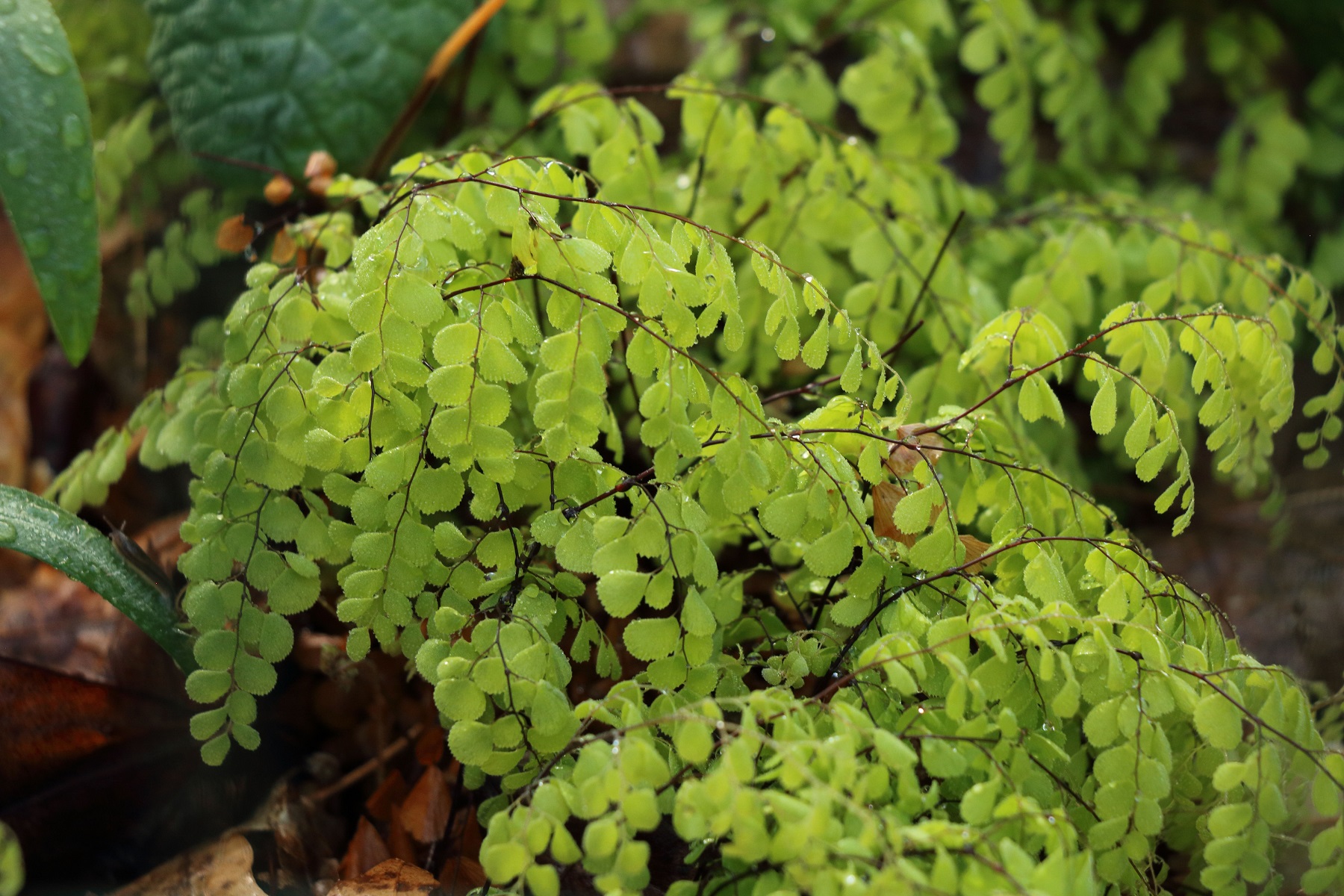GARDENING IN HARMONY WITH NATURE IN THE NORTHEAST
Native Ferns
No woodland garden would be complete without lots and lots of ferns. With a few notable exceptions (Cinnamon Fern anybody?), ferns are seldom showy. Instead they are reliable, tough, and many of them are upon close inspection quite intricately beautiful. In addition, they are as deer resistant as it gets. The Northeast is blessed with many garden-worthy species of fern, so there is little need to consider exotics in this class. Instead, try looking for unusual native ferns to add to your landscape. Plant them in masses, as a backdrop for herbaceous plants, or as accent plants.
Ferns present on our woodland even before we started gardening included New York Fern, Christmas Fern, Sensitive Fern, Cinnamon Fern, Interrupted Fern and Rock Polypody. We have encouraged them to spread and added quite a few additional species.
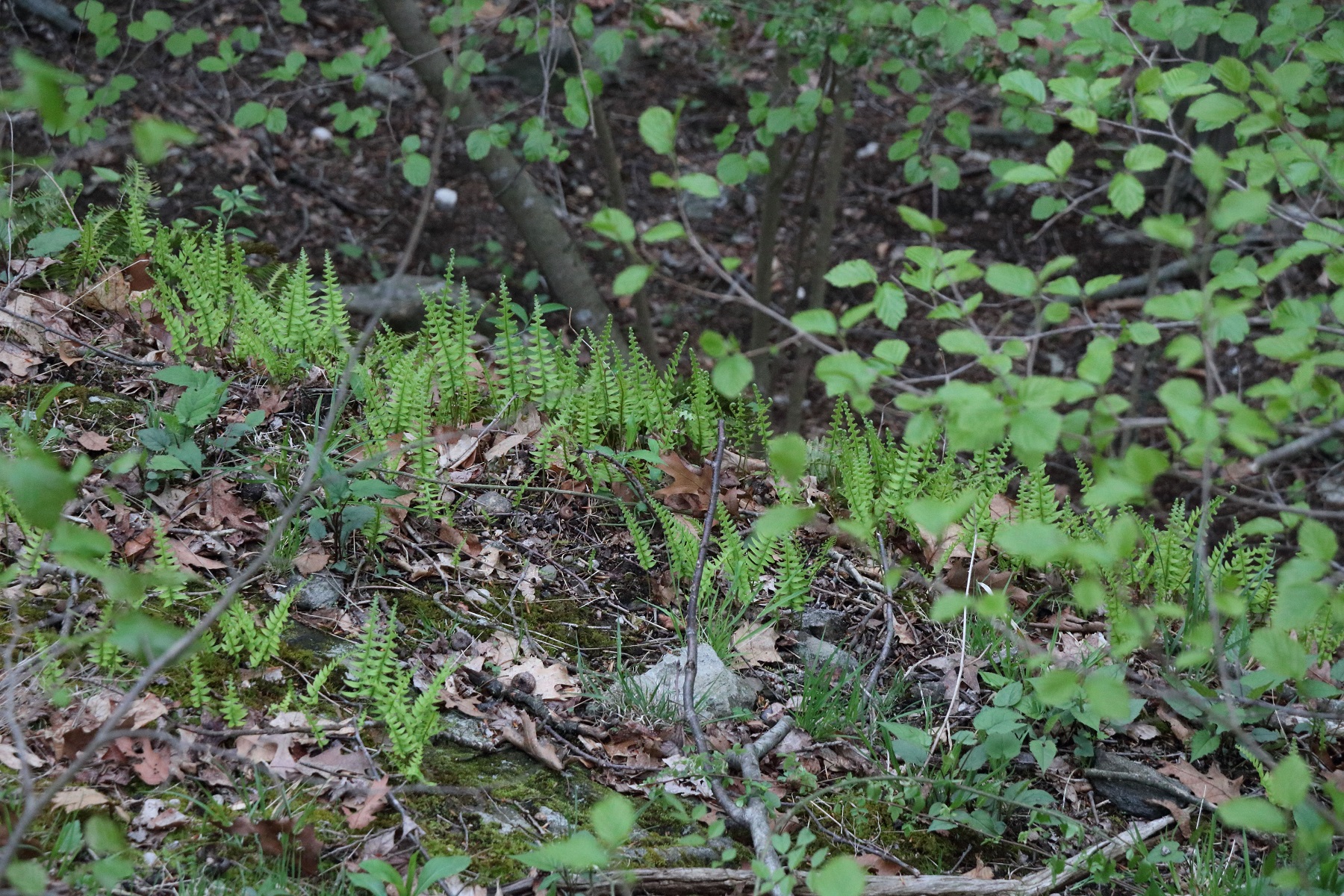
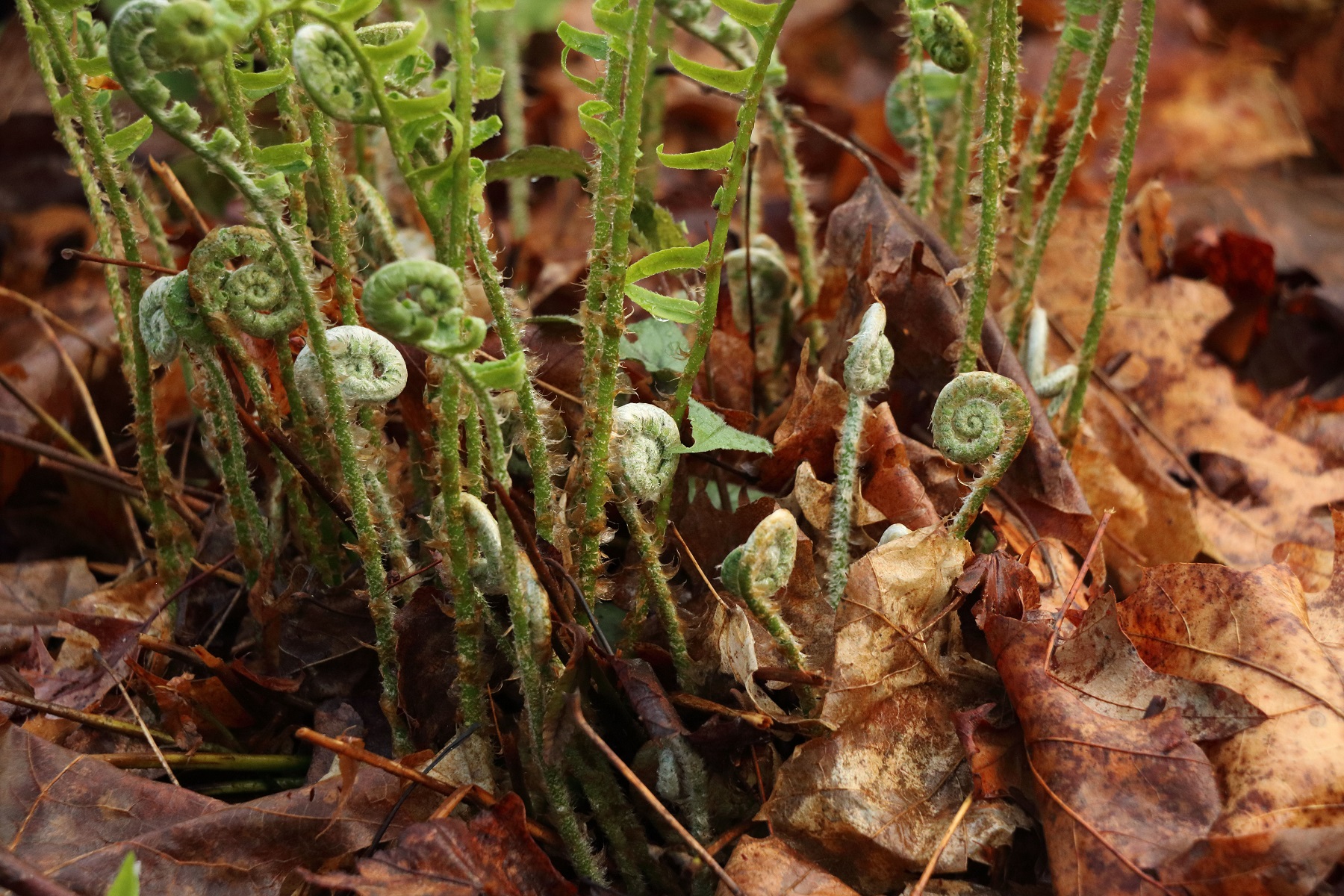
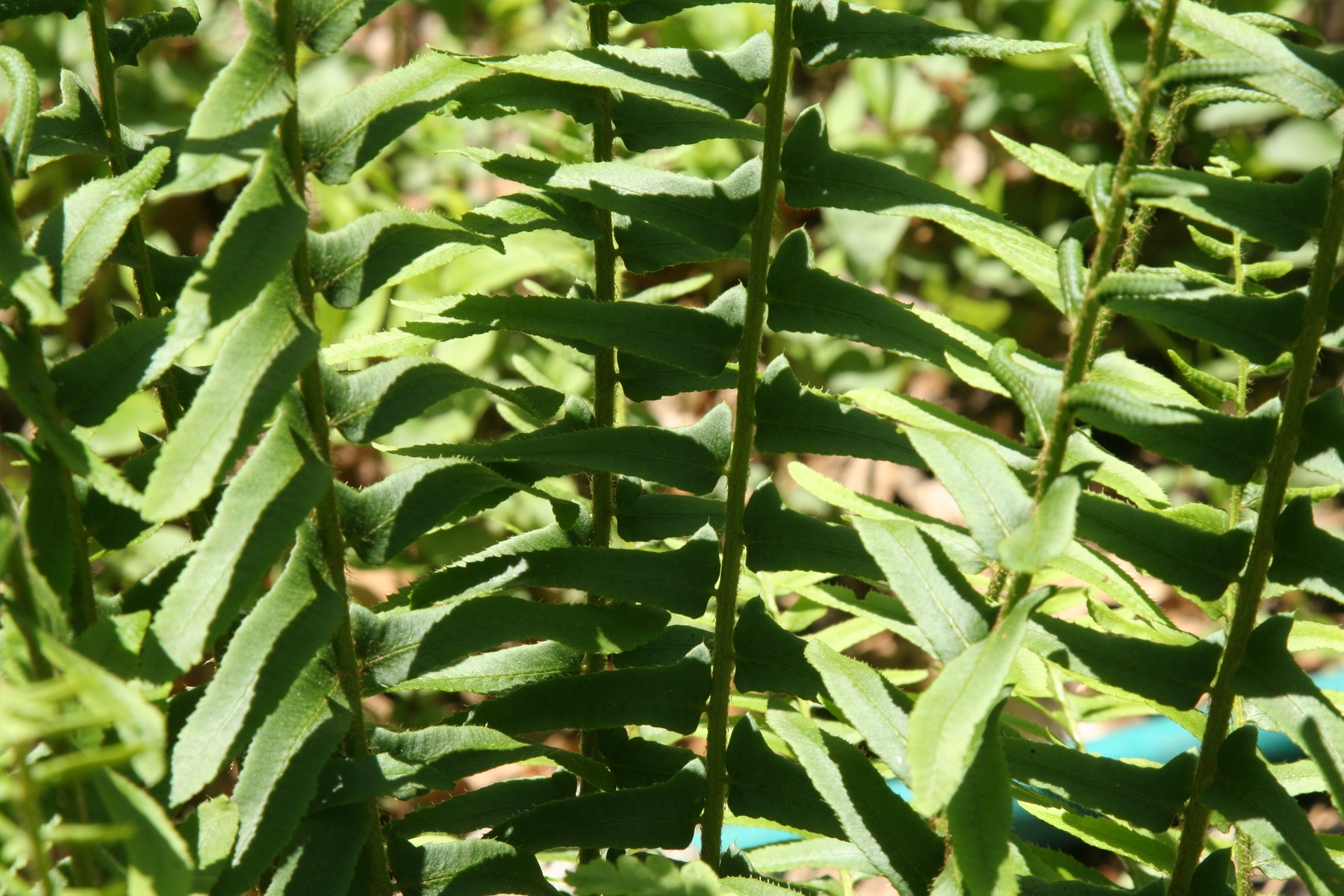
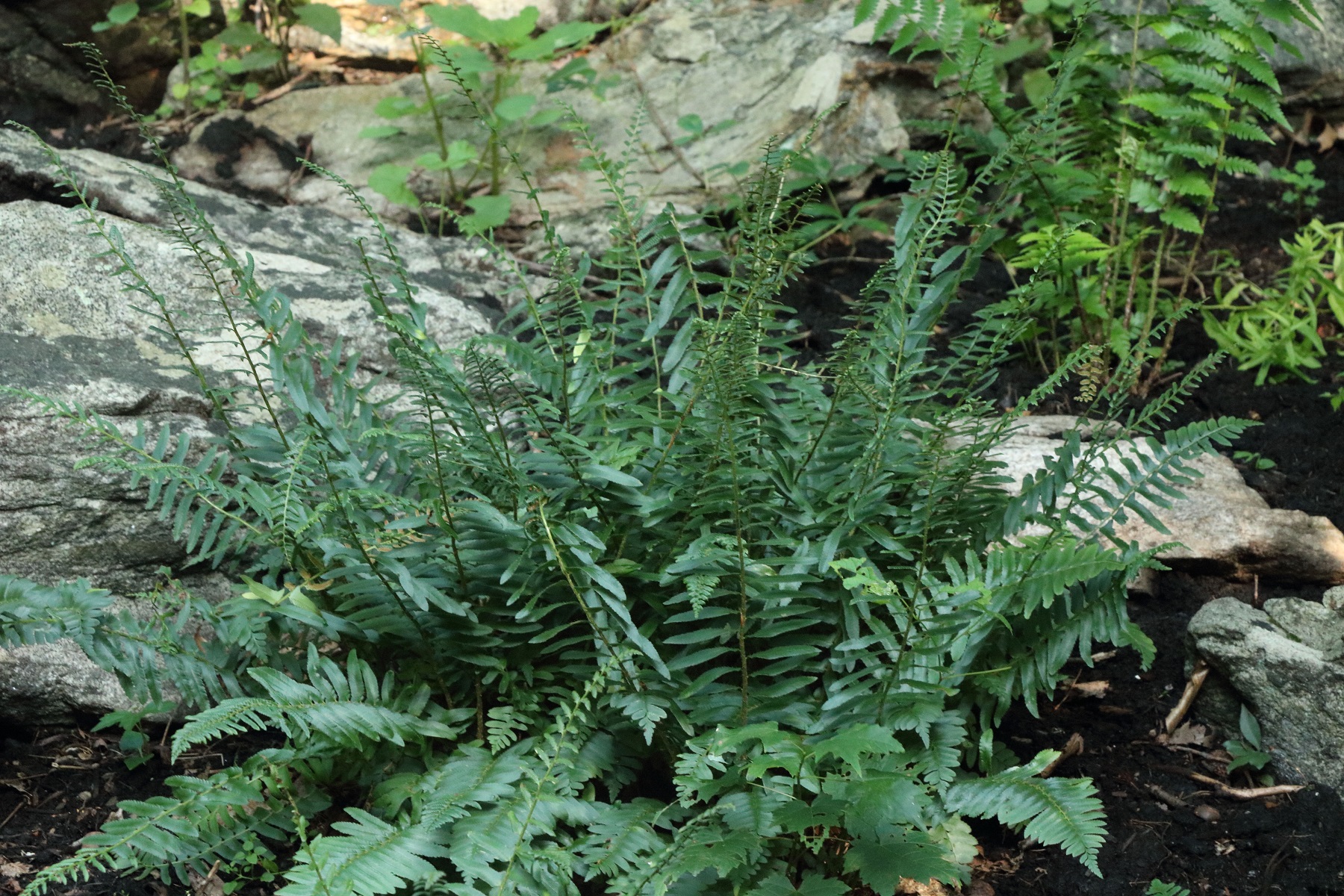
New York Fern
New York Fern prefers conditions a little wetter than Christmas Fern. After removing some fallen wood and pulling the invasive garlic mustard, New York Fern formed a continuous carpet of around 1000 square feet in one location on our property. We have it popping up in the former meadow as well now. So this species may be a bit too weedy for some. A lookalike, Hay-scented Fern, is apparently an even more aggressive spreader. Nonetheless, we like the large dense colony it formed. New York Fern starts to look a bit ragged around September and has completely gone dormant by October.
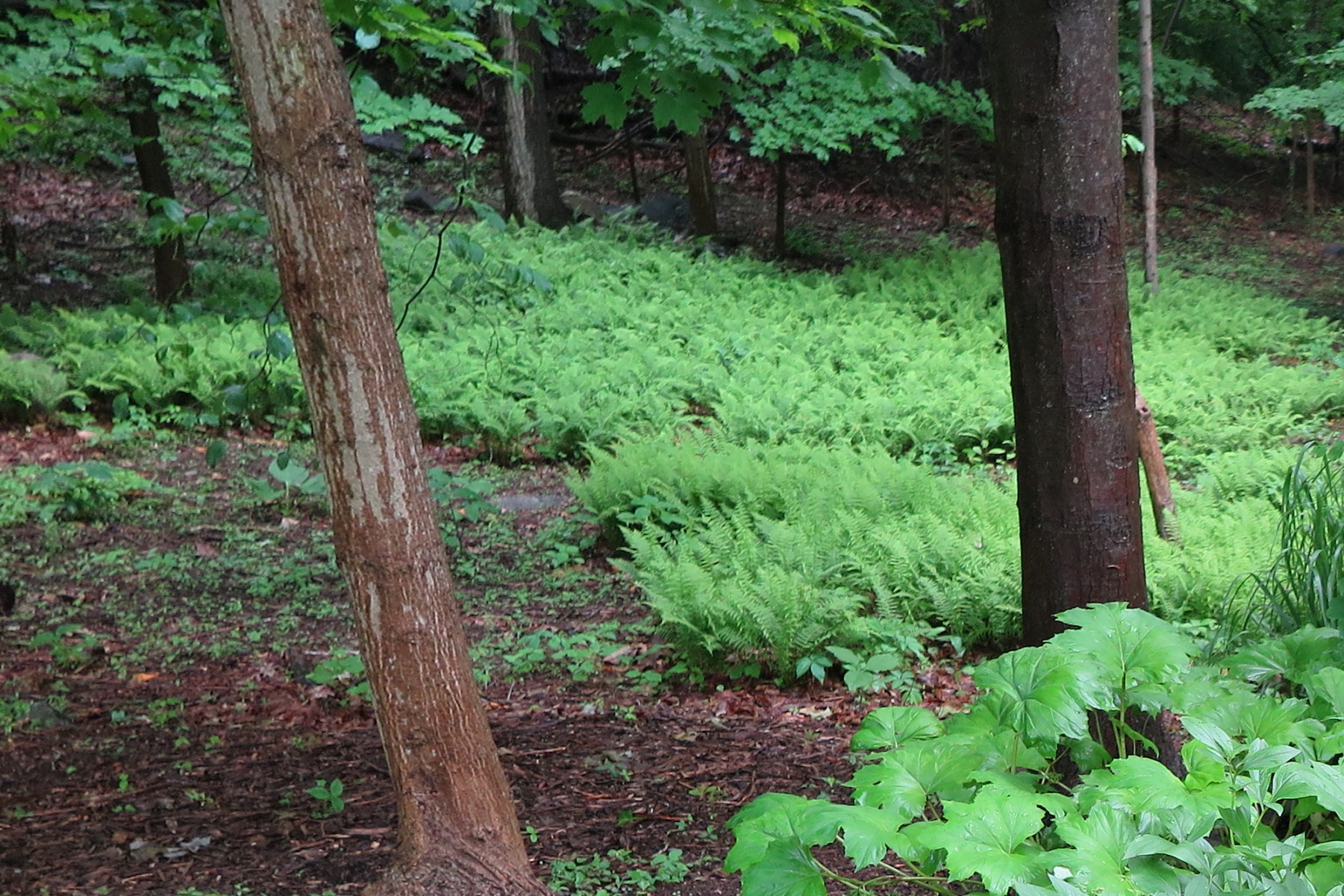
Sensitive Fern
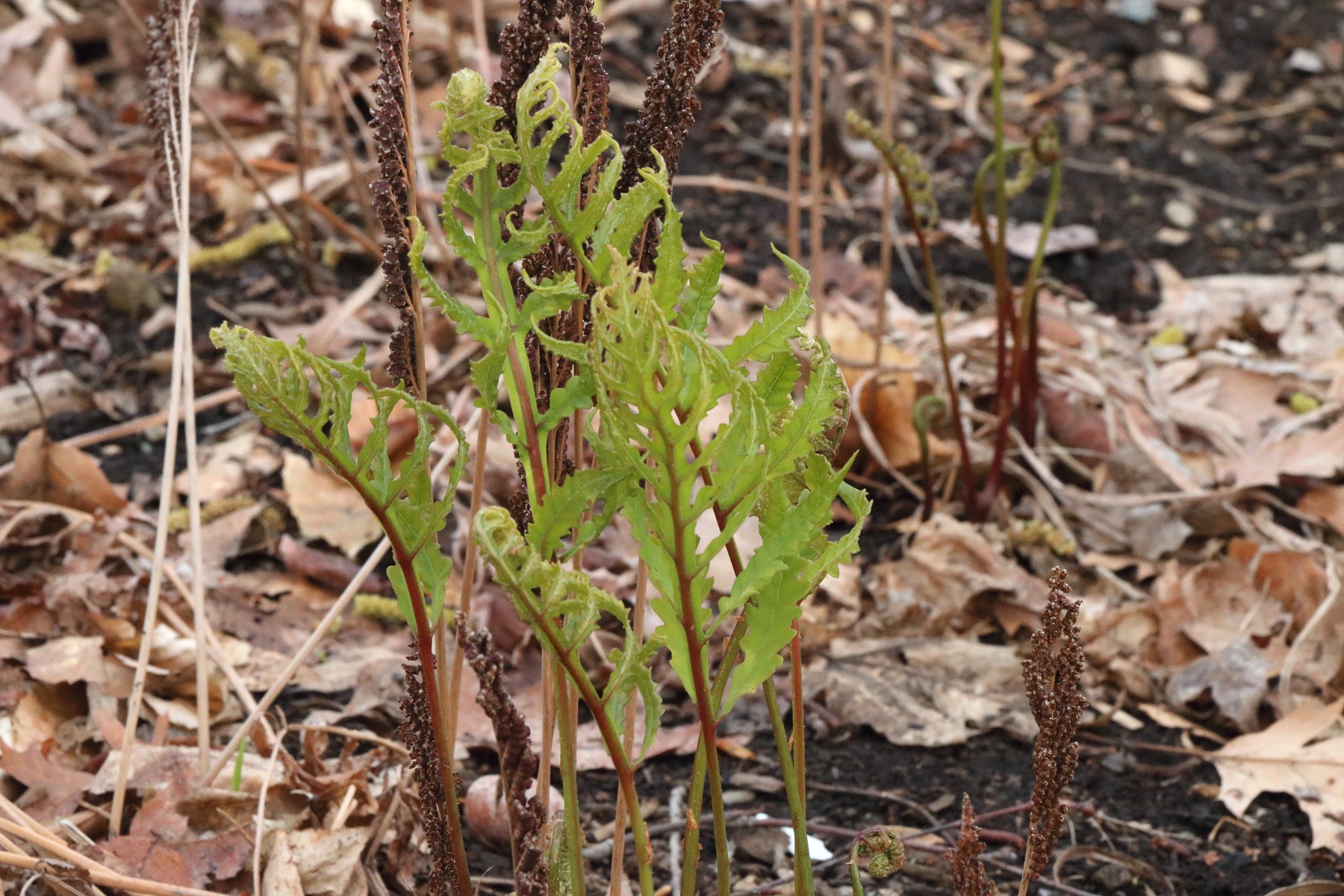
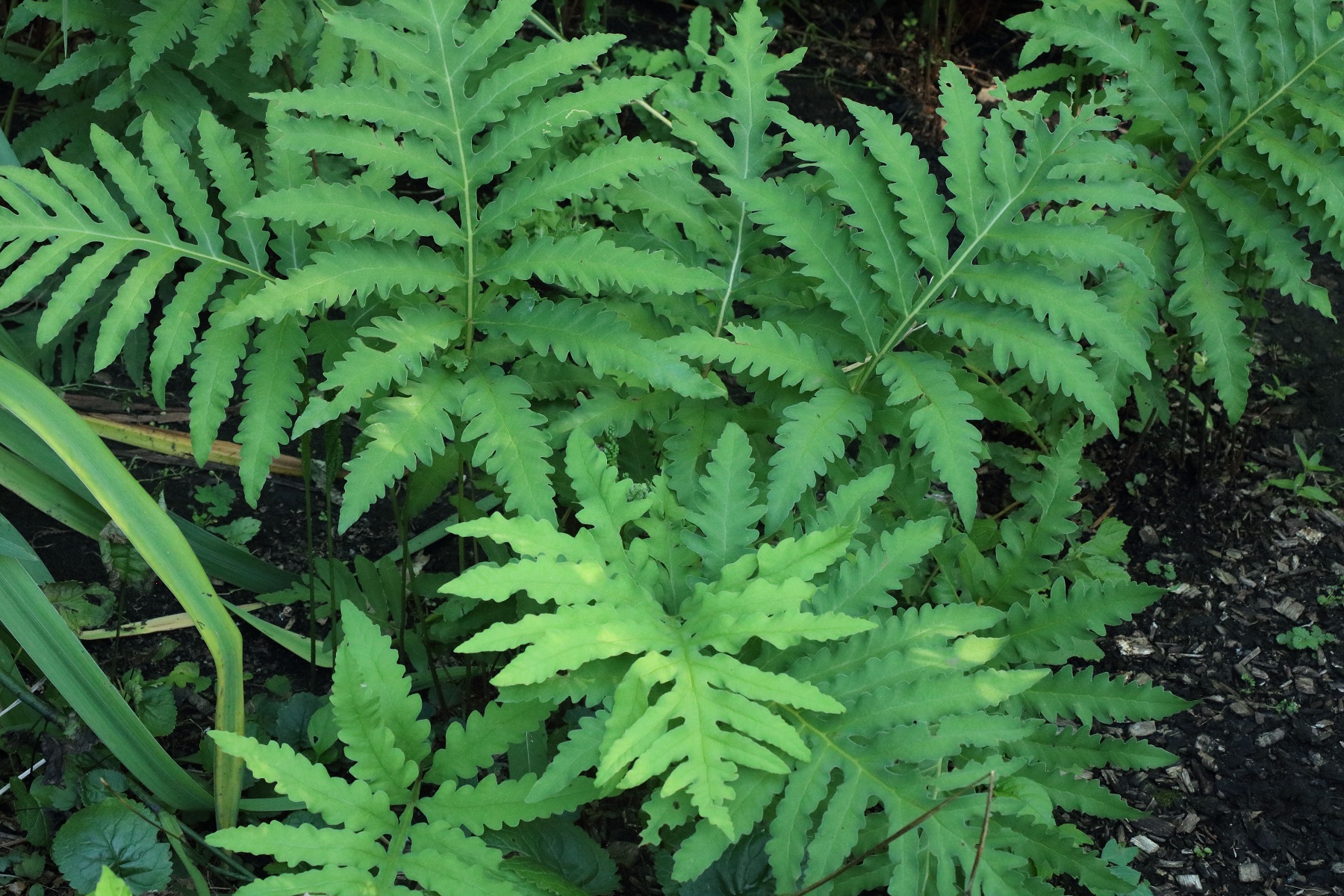
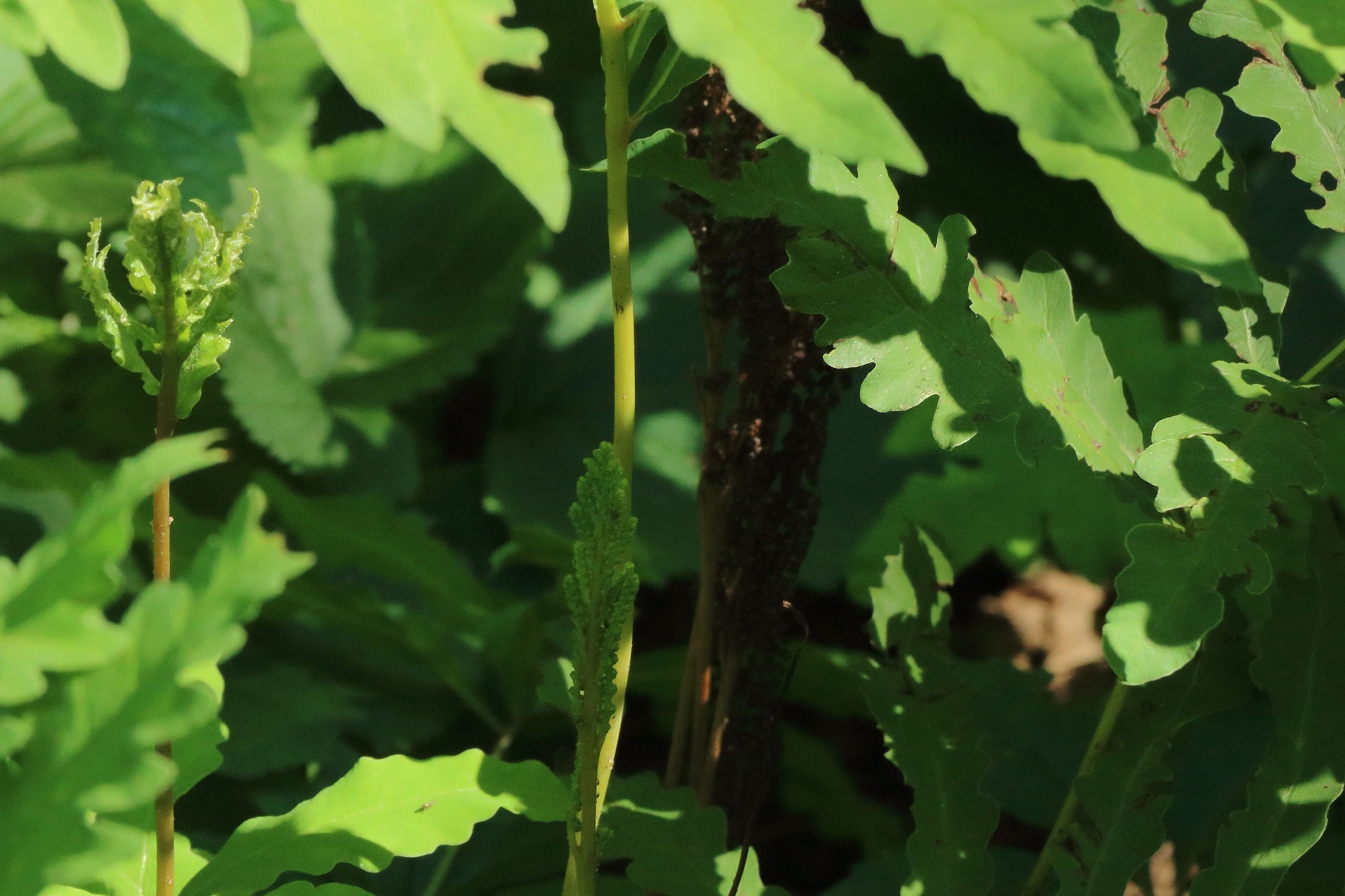
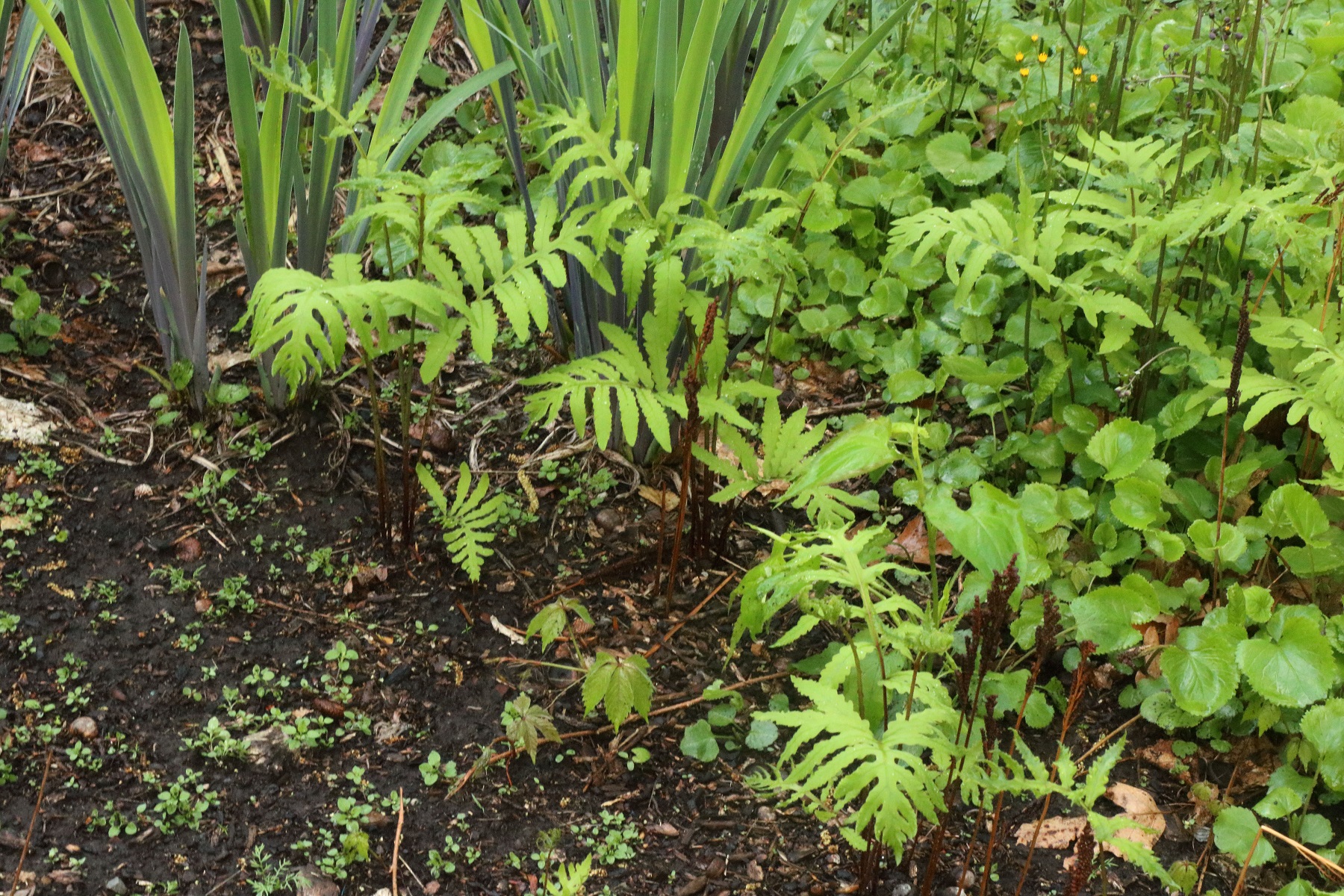
Iris × robusta 'Gerald Darby' and Packera obovata
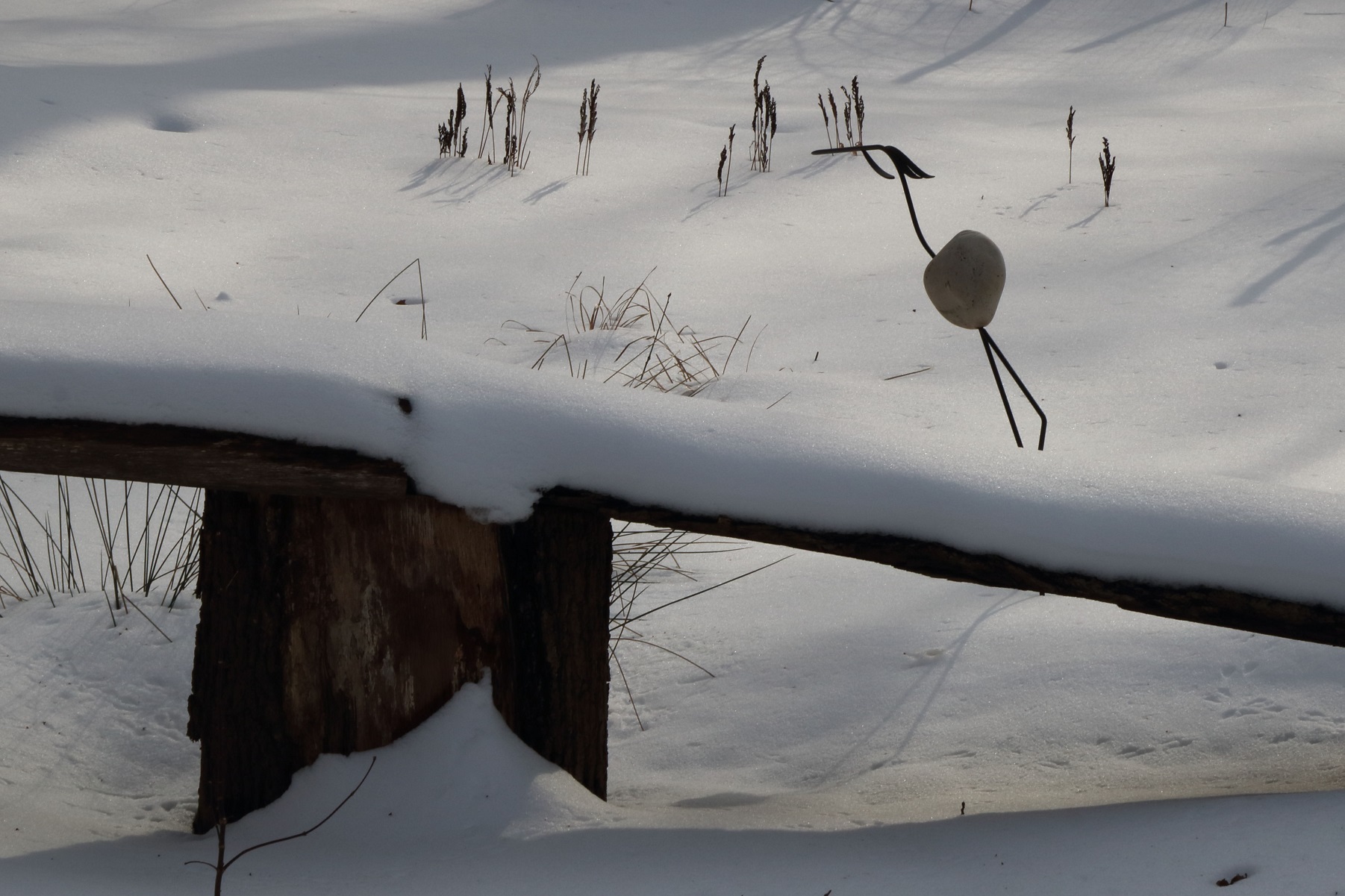
persist throughout winter
Ostrich Fern
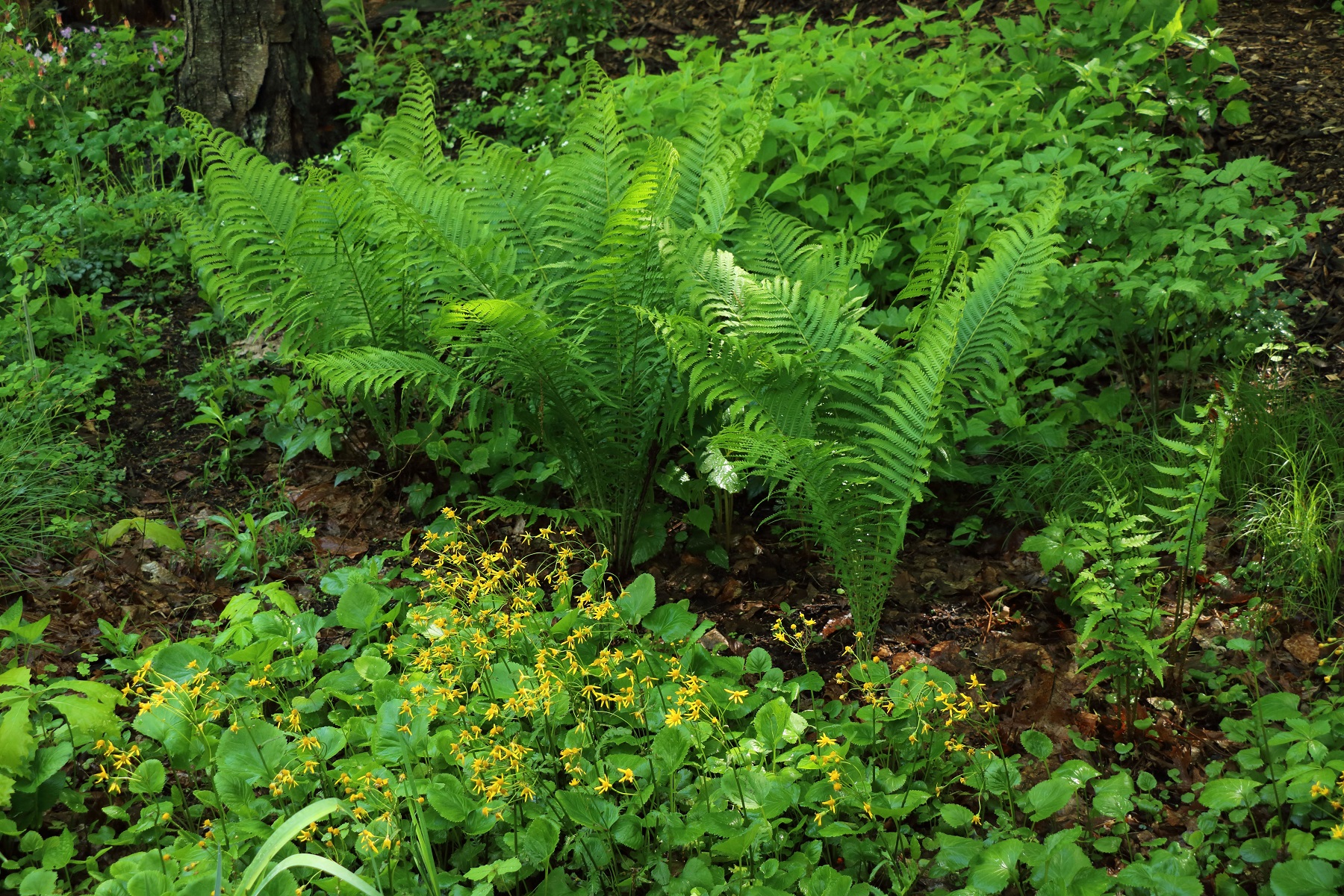
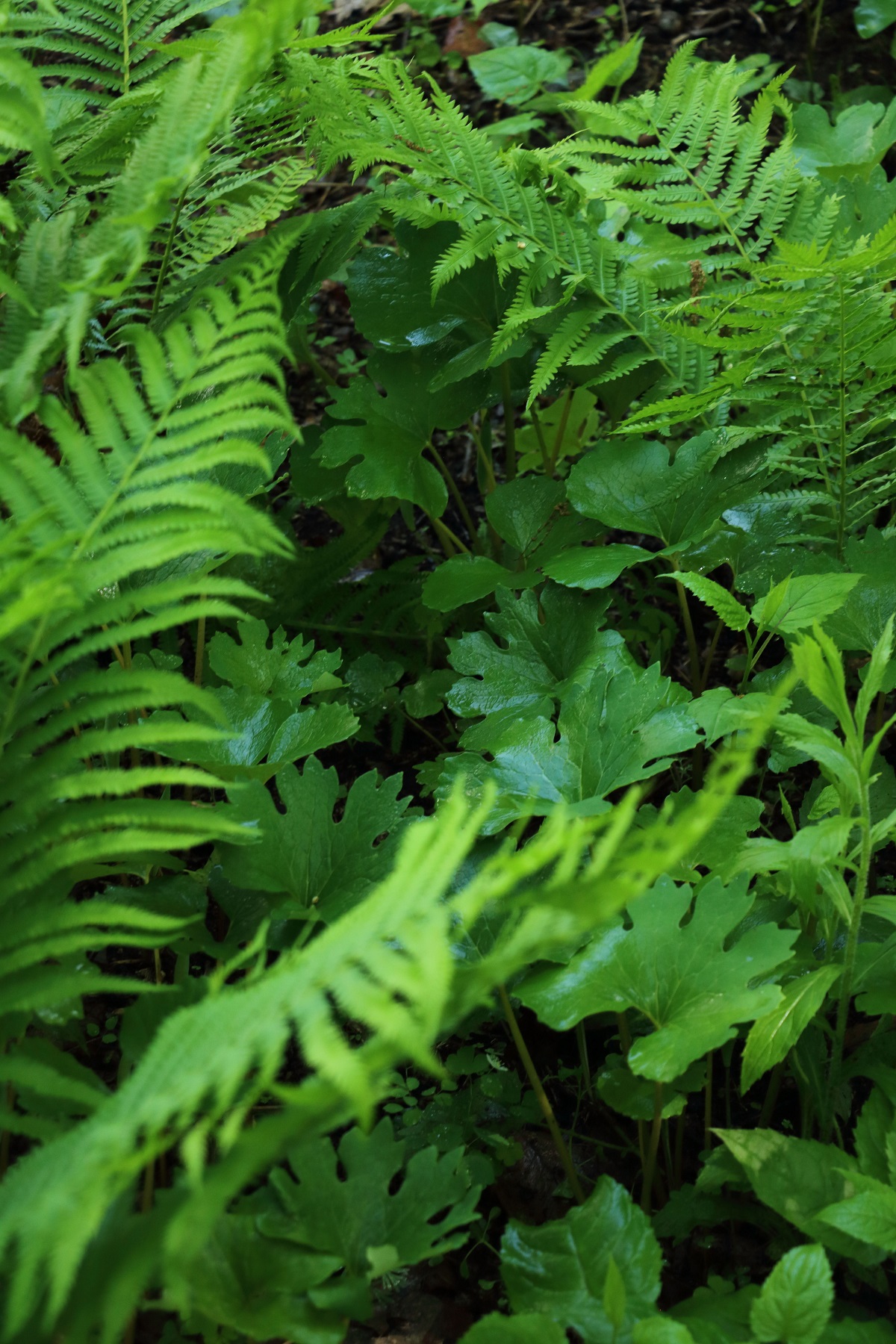
with Bloodroot
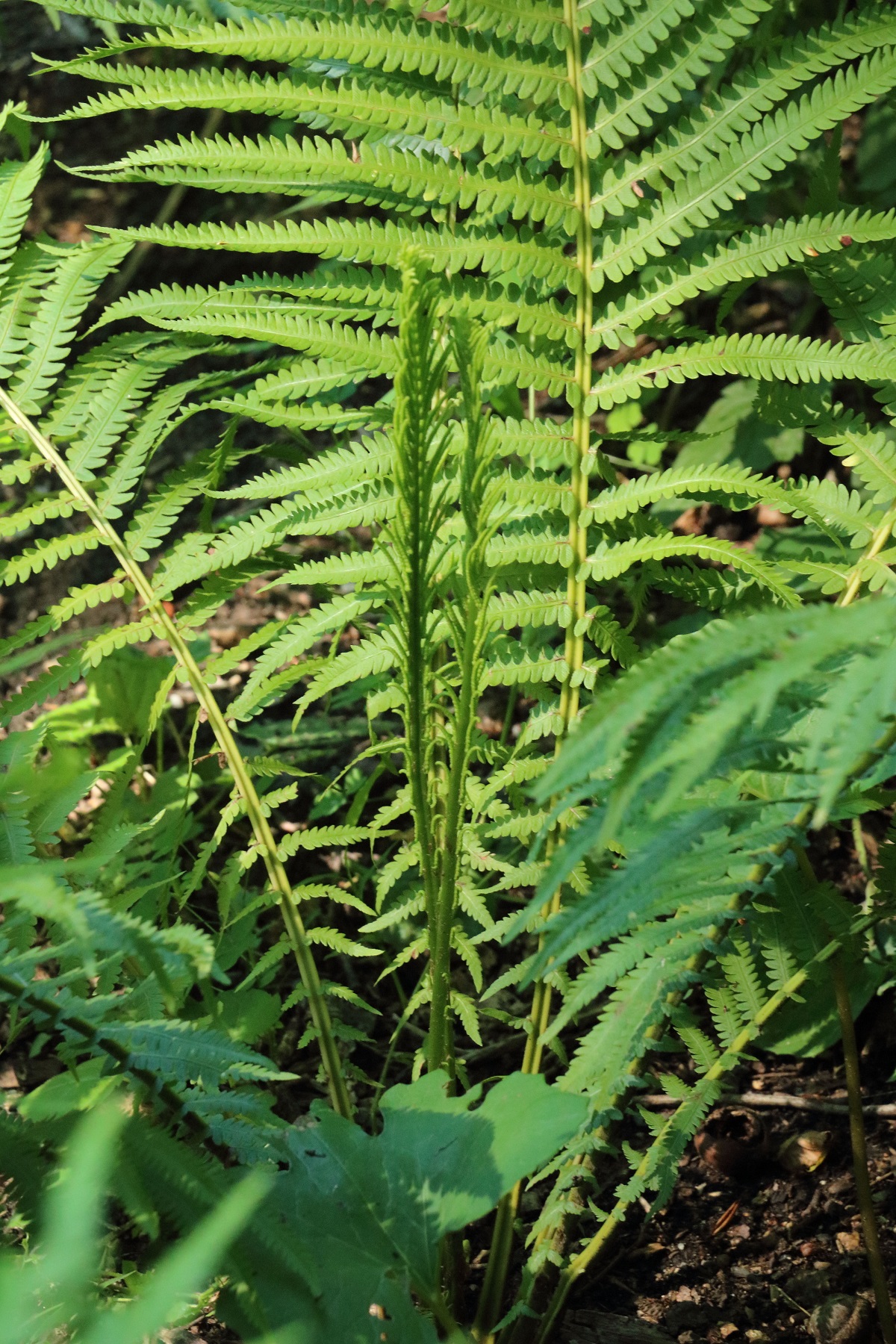
fertile fronds
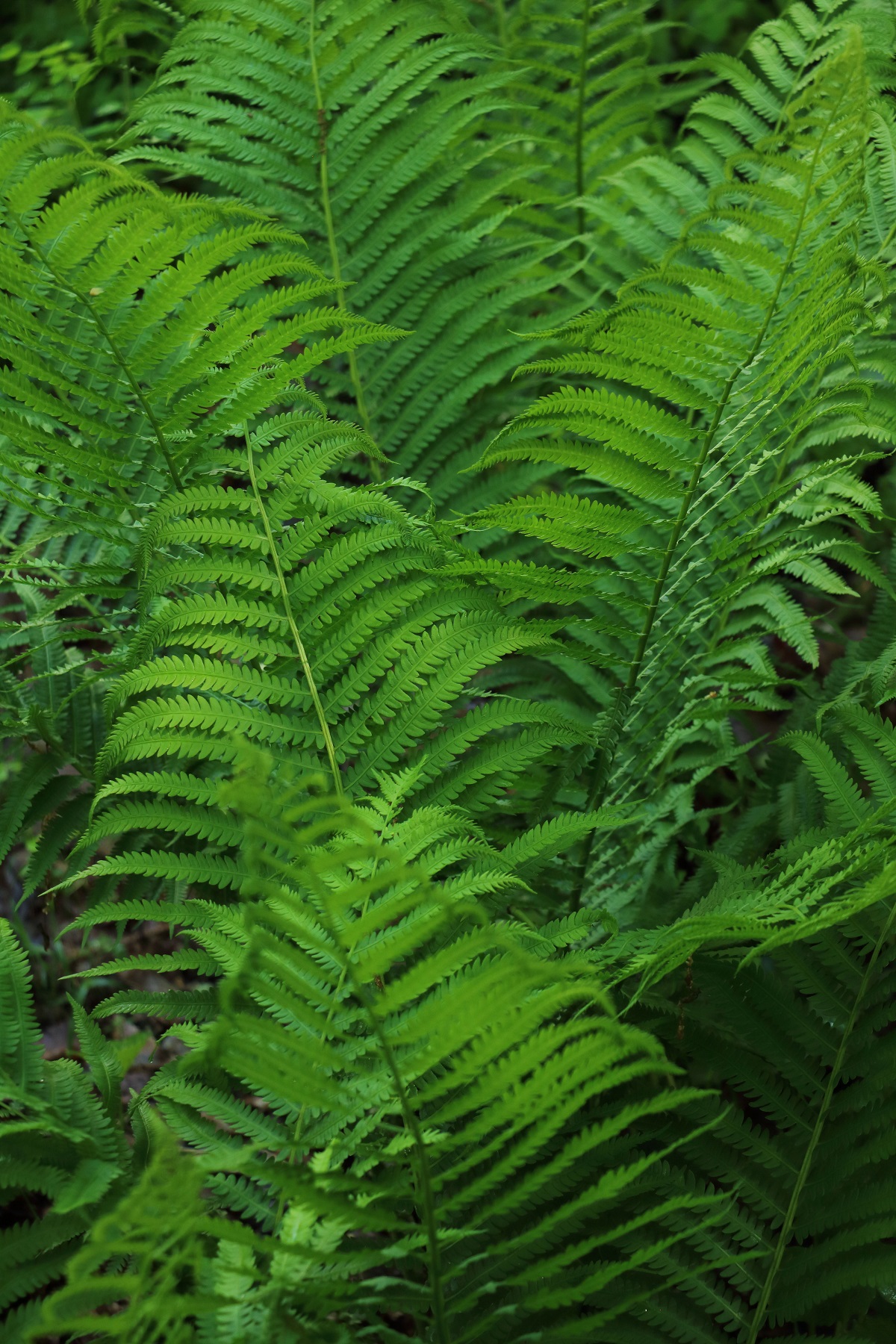
sterile fronds

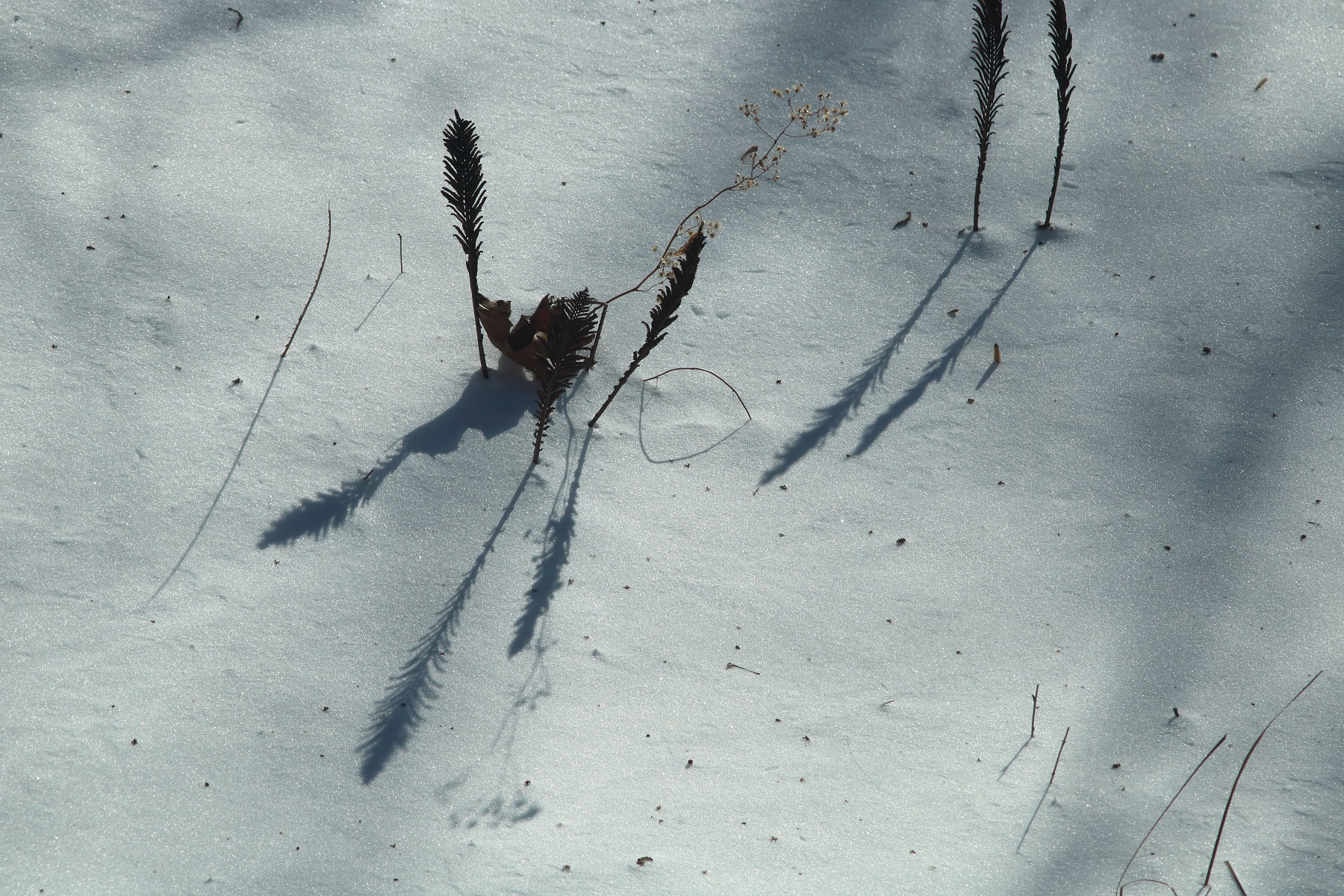
Interrupted Fern
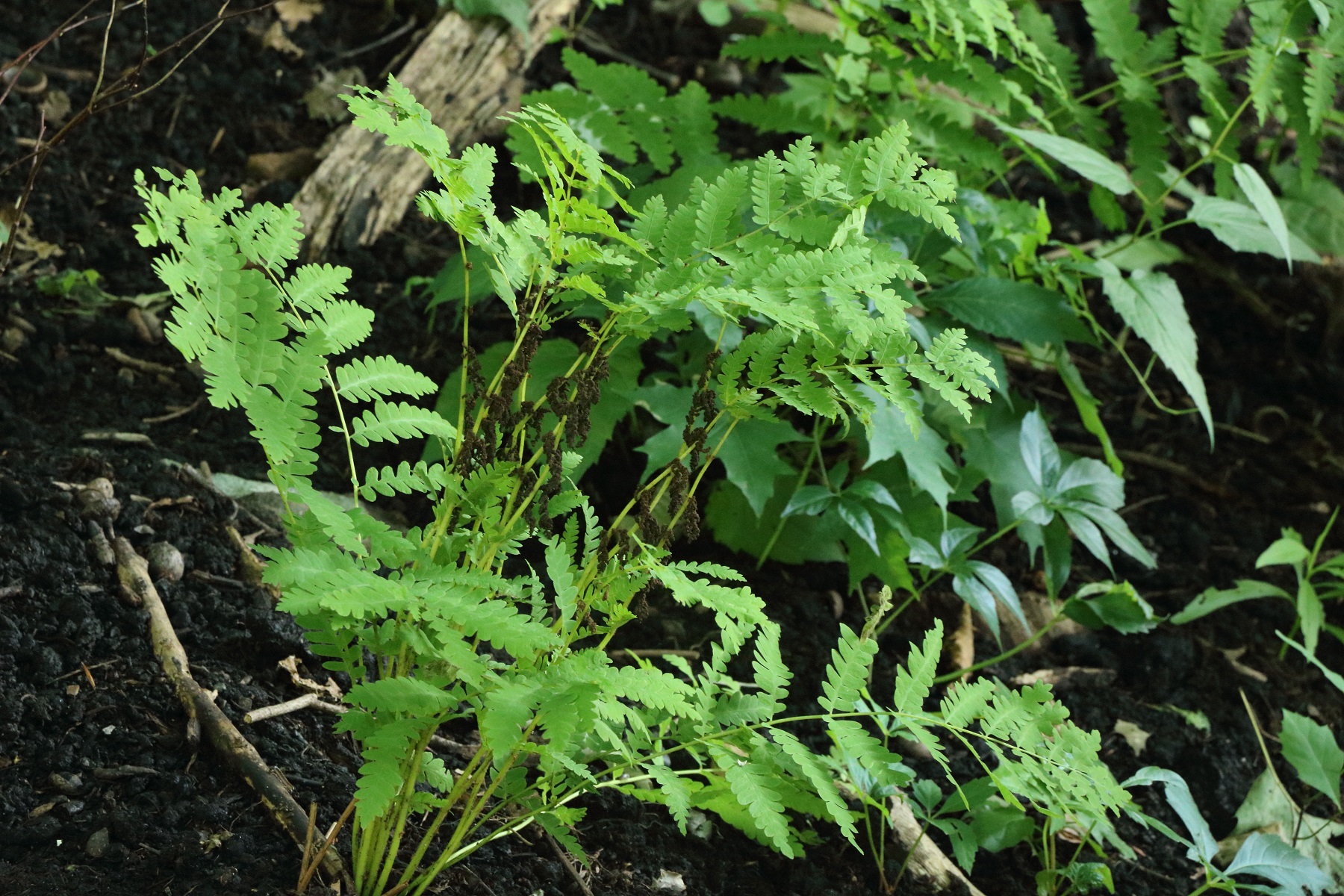
(Interrupted Fern)
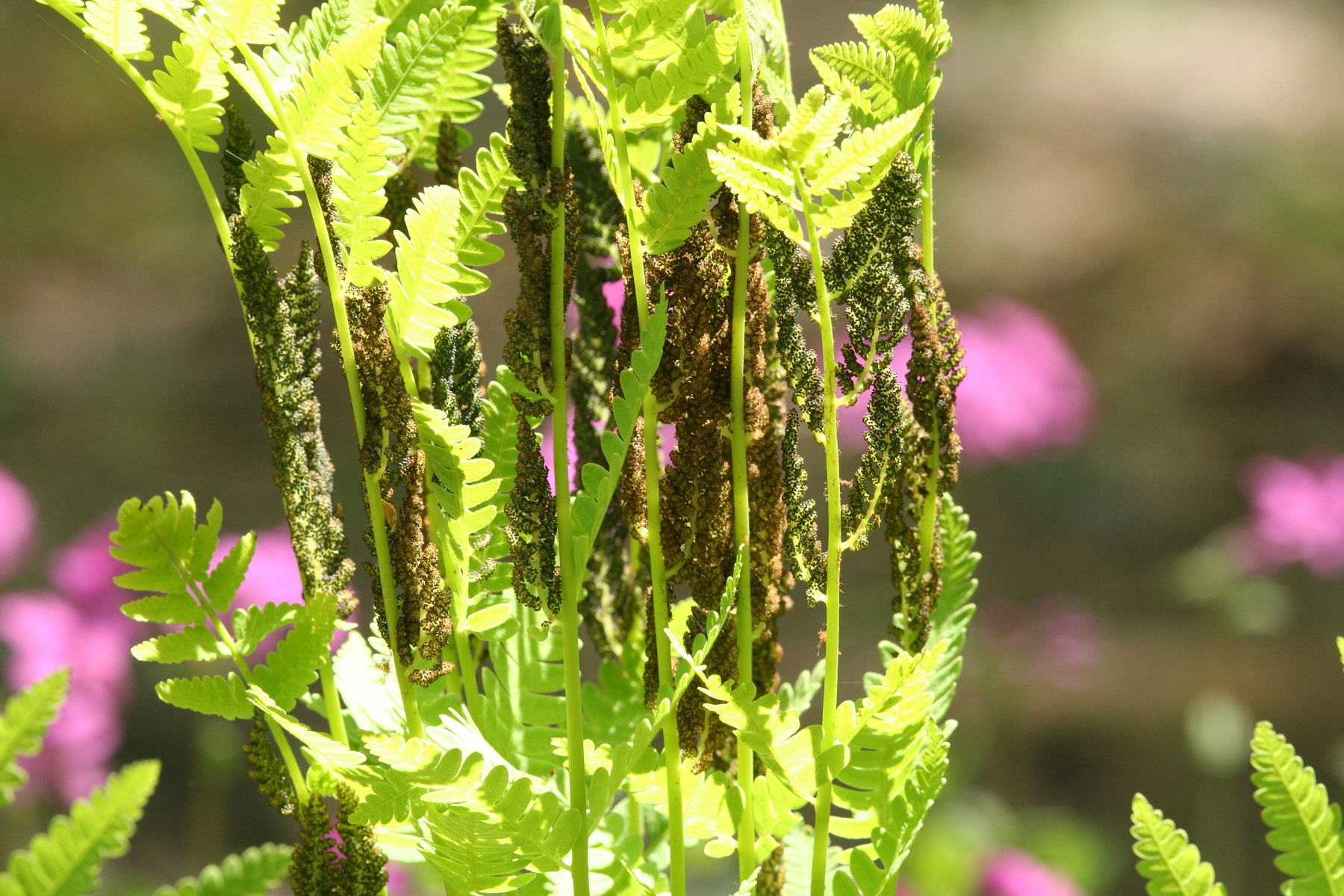
(Interrupted Fern)
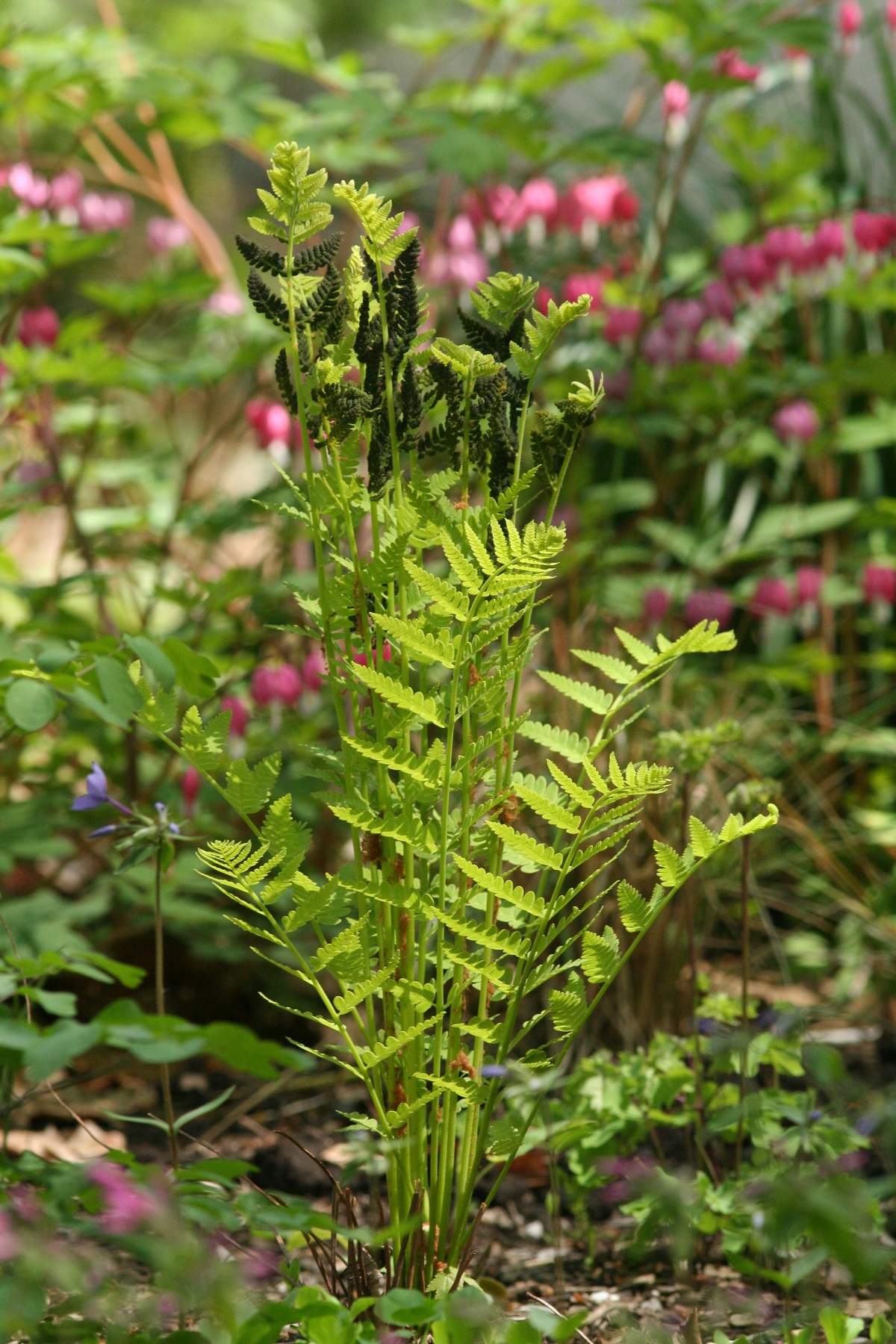
(Interrupted Fern)
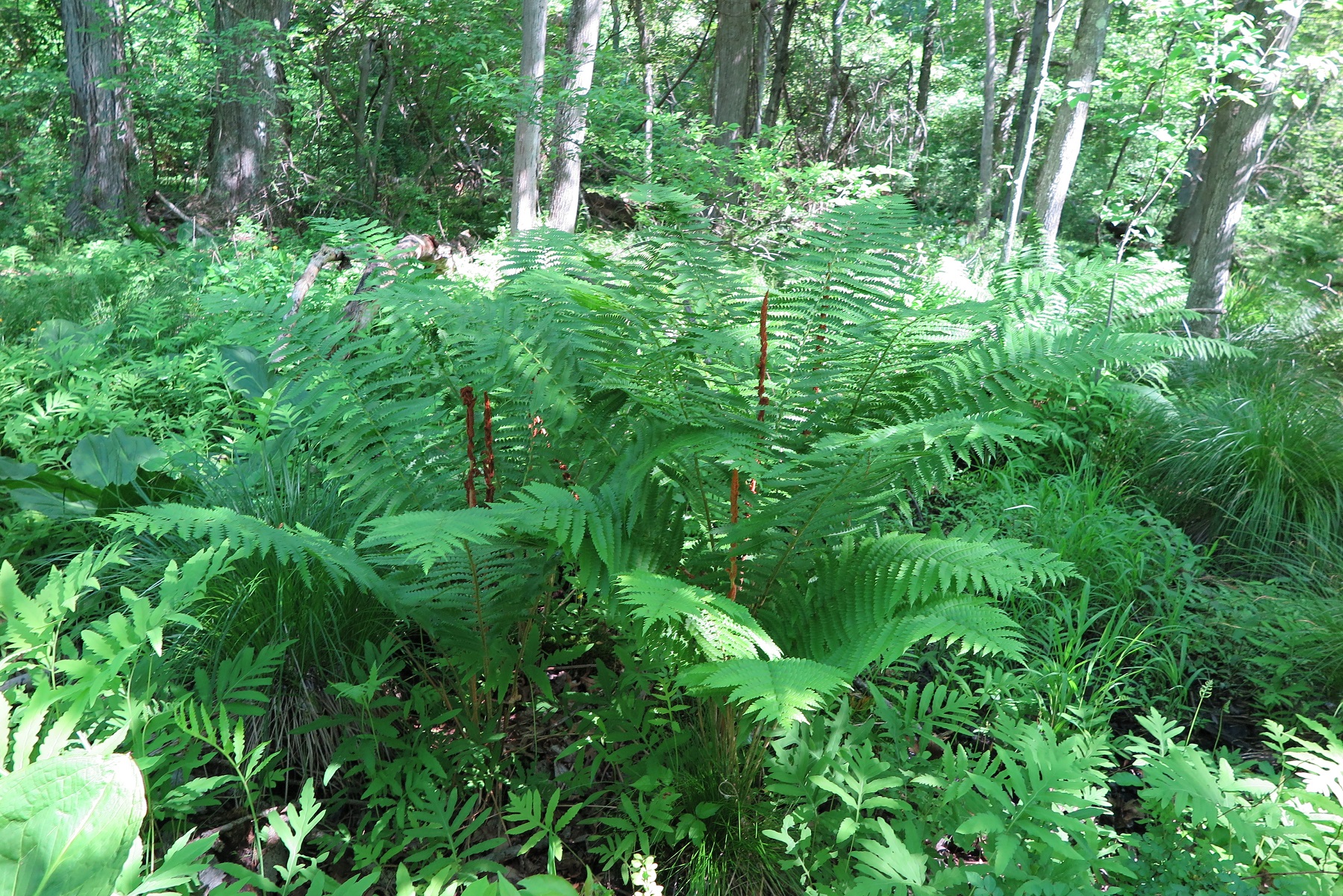
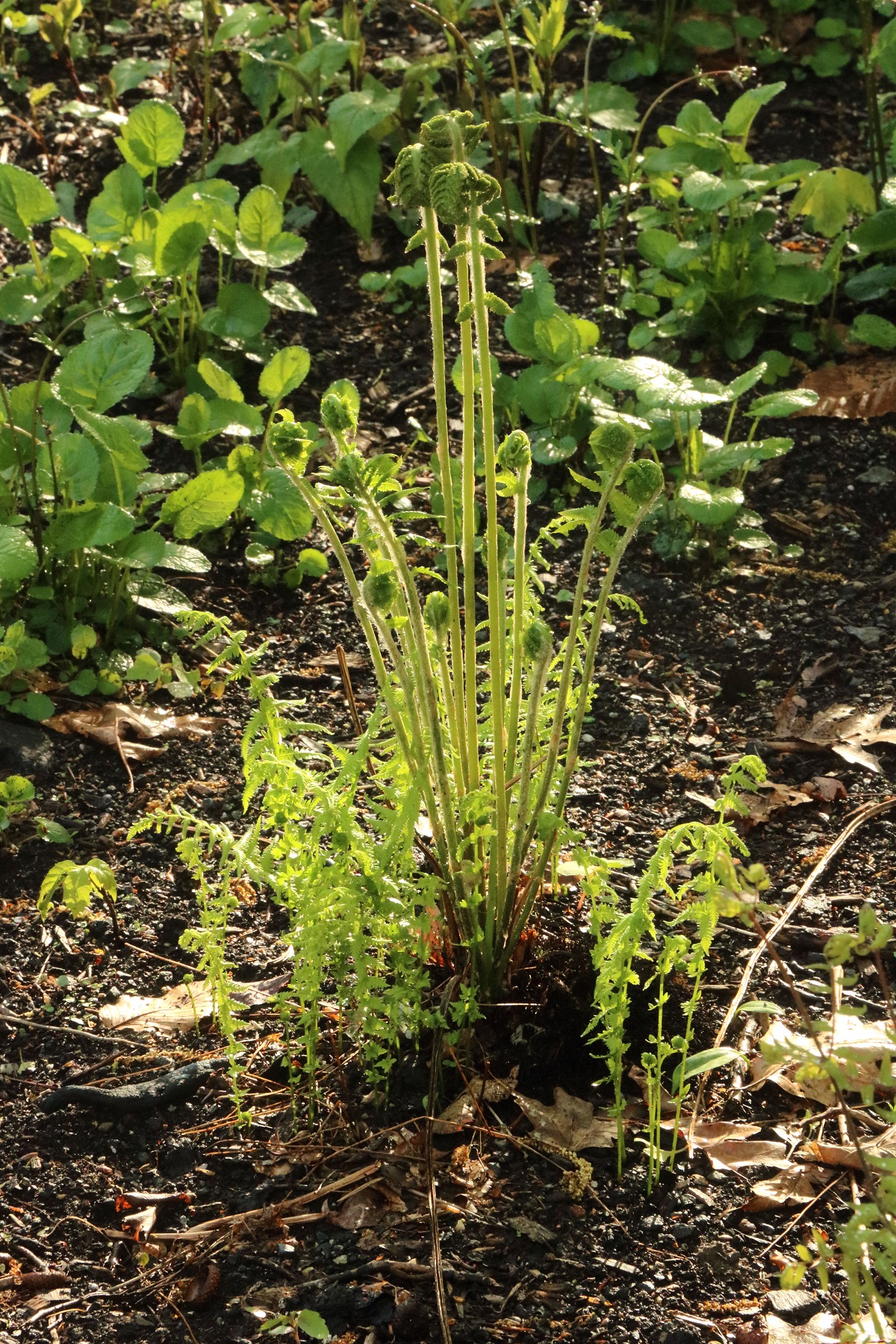
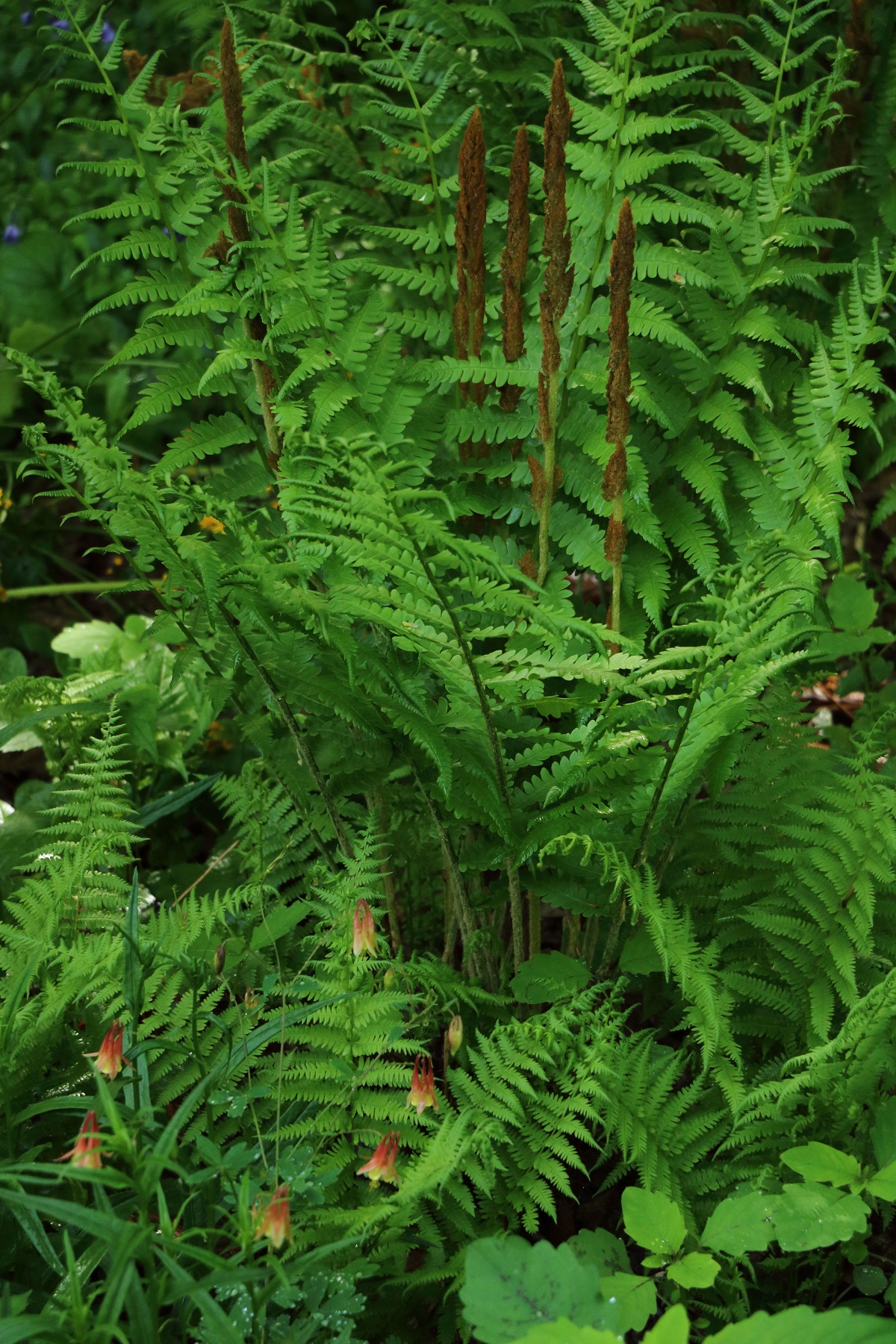
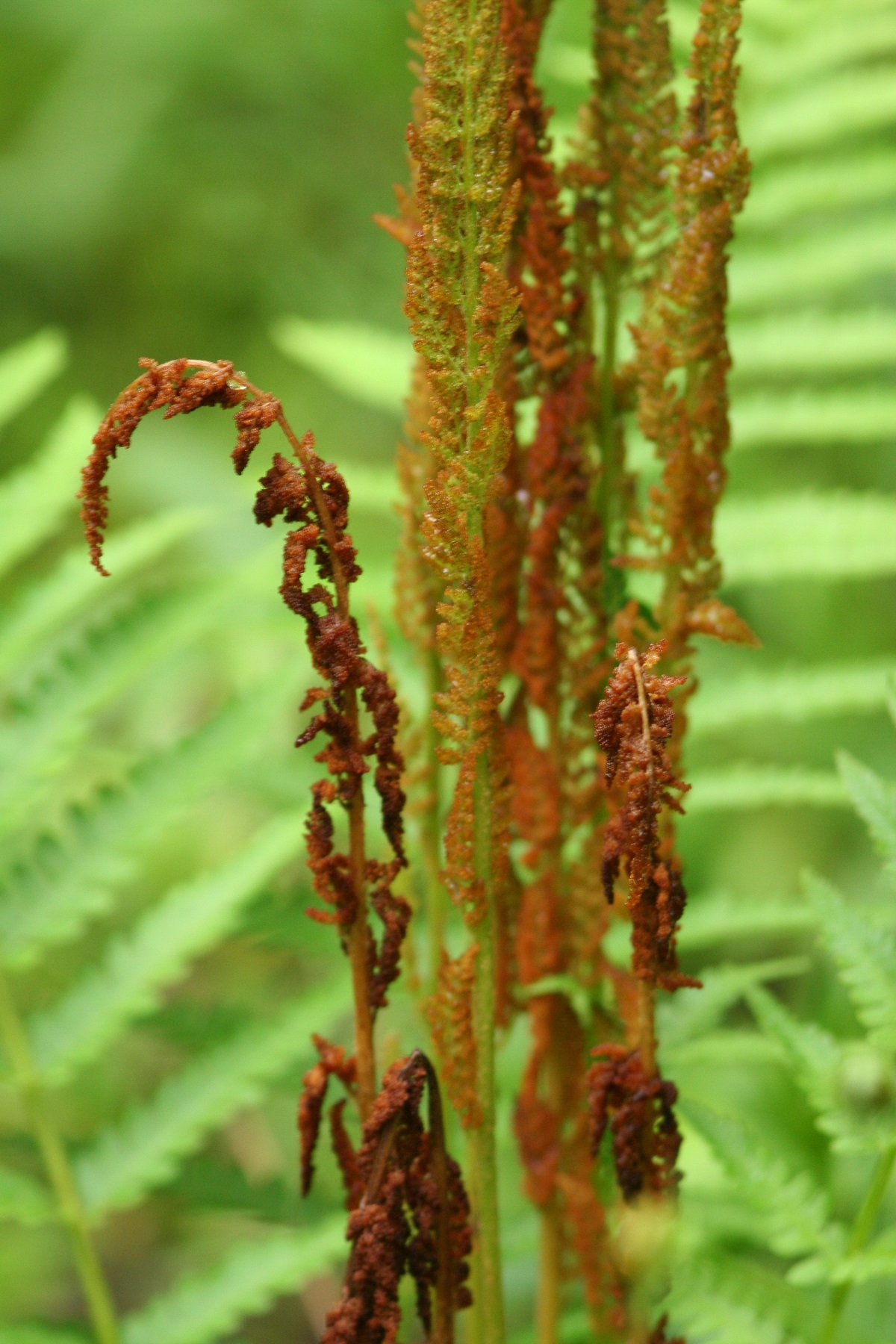
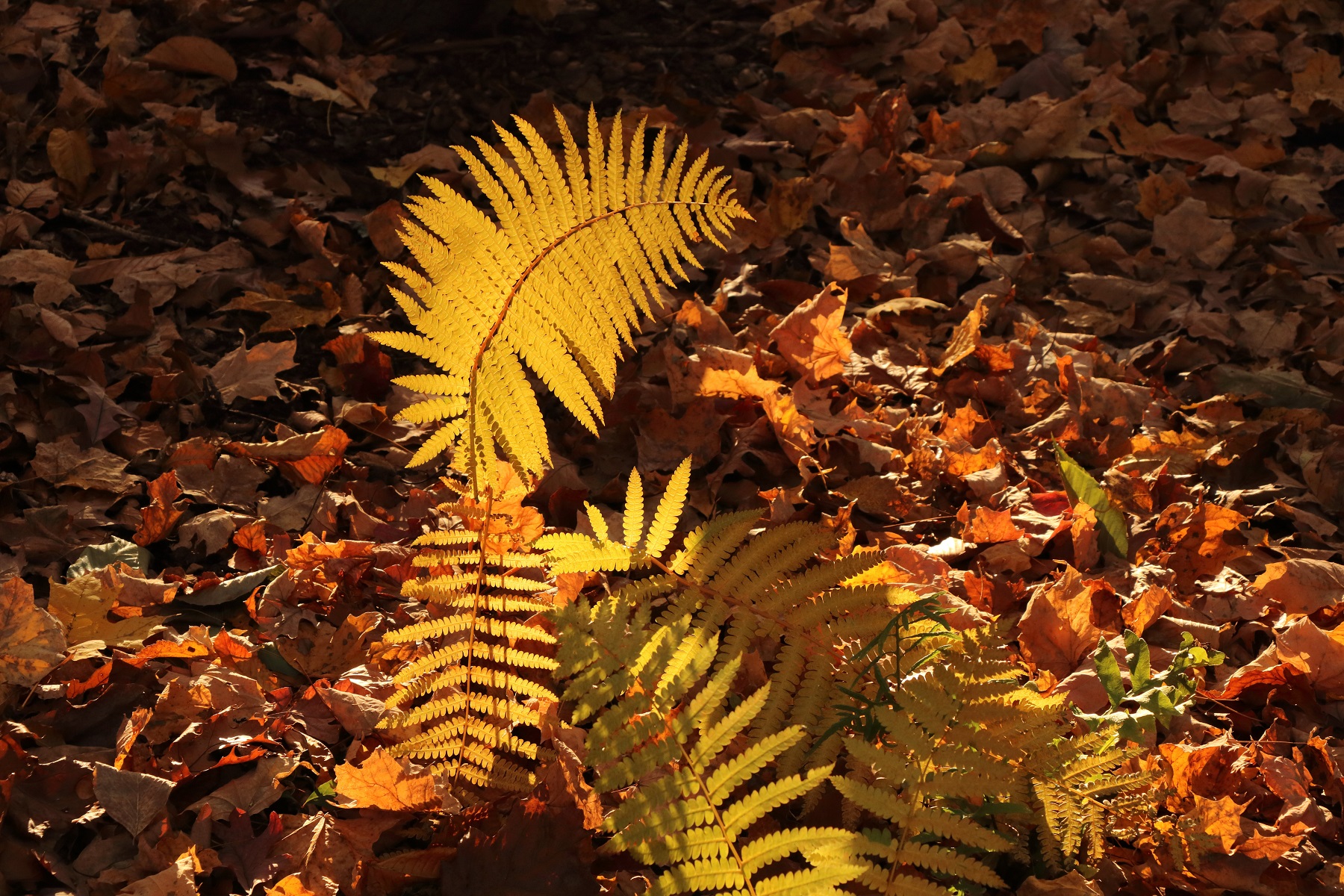
Royal Fern
Royal Fern stands out among all other native ferns in that its mature foliage looks almost like that of flowering plants. Brown fertile fronds are displayed royally at the top. The unfurling fiddleheads emerge beautifully in a dark color tone. Young fronds In some of our individual plants, look quite interestingly ‘inverted’, with the sterile (lower) part of the fronds in a purplish color tone and the young fertile parts on top in green. Maybe this is the variety ‘Purpurascens’? We planted our colony in a wet spot and they seem happy there.
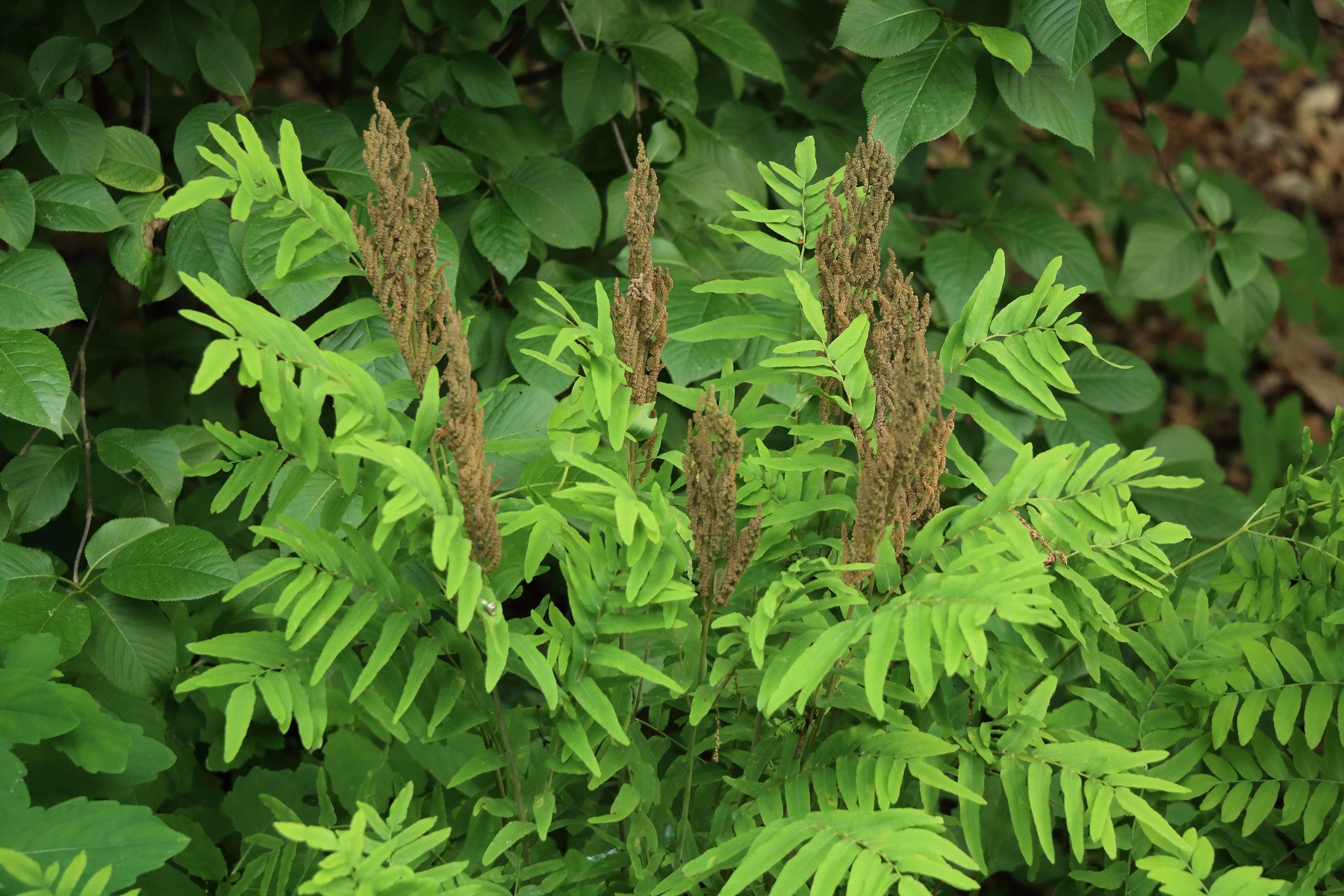
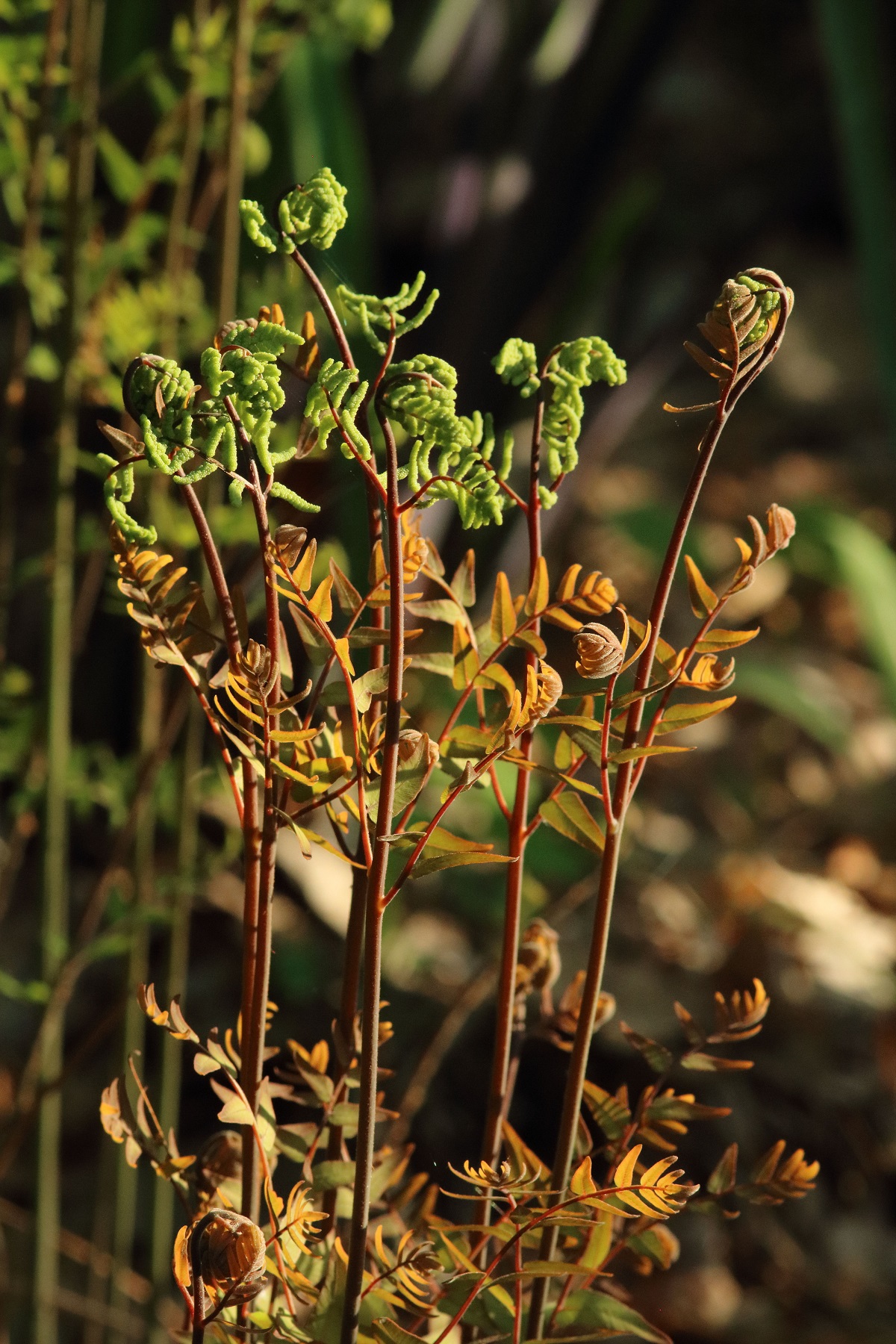
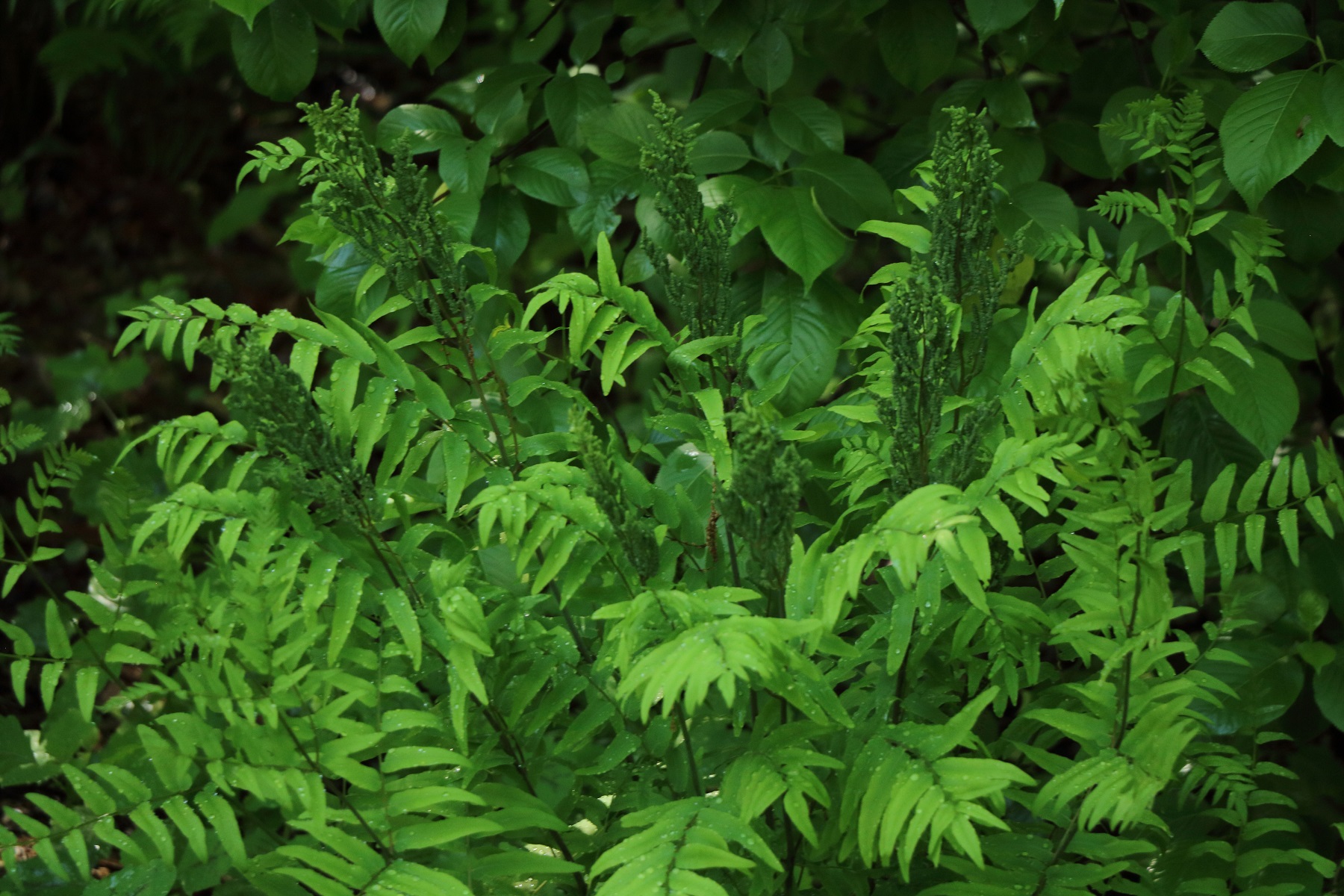
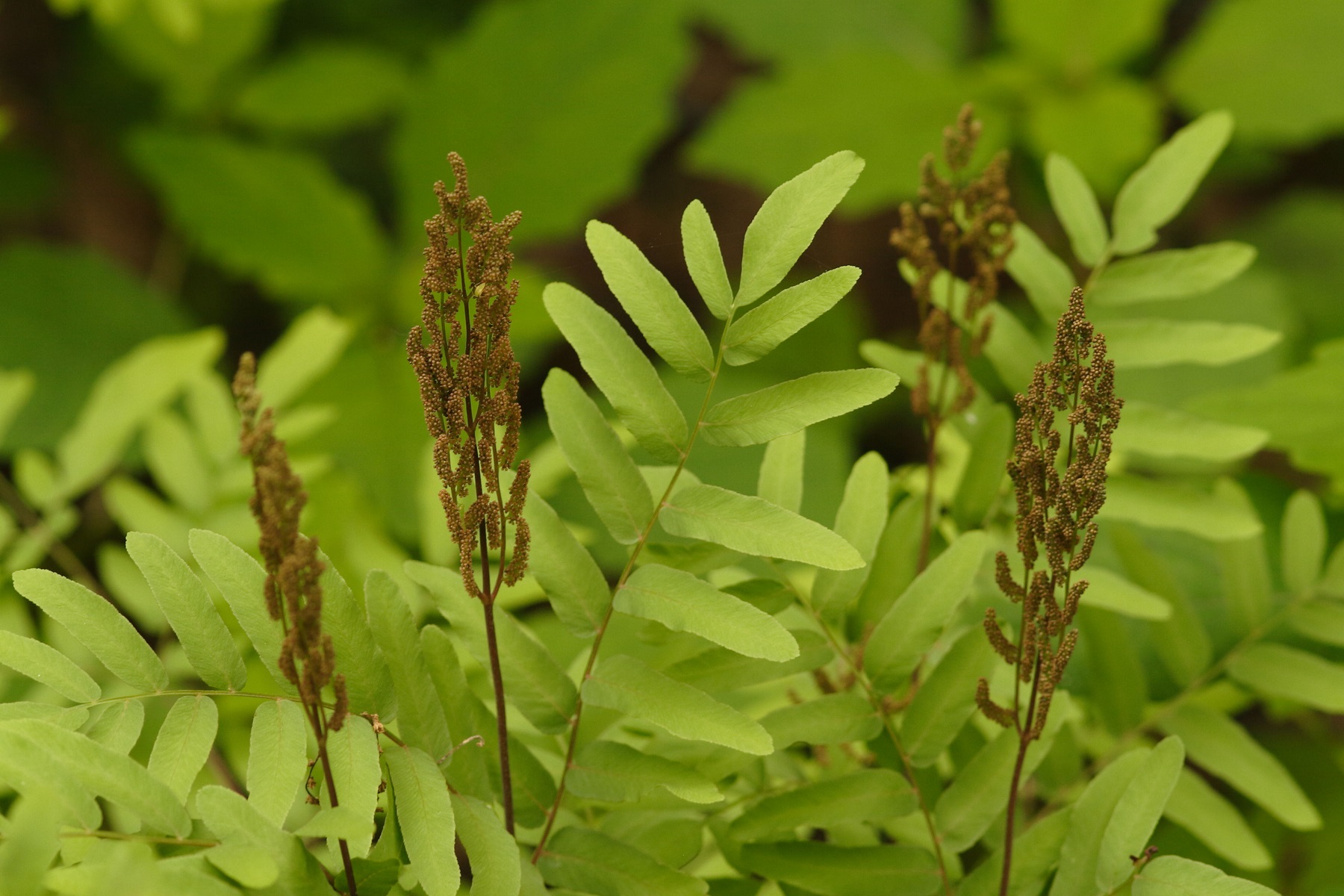
fertile tips of fronds
Marginal Wood Fern
There are several excellent native Wood Ferns of the genus Dryopteris to choose from. Marginal Wood Fern is a certainly one of the best. It has a very neat vase-shaped clumping habit, topping out at 2 feet. Emerging Fiddleheads are arranged in a symmetrical circle. Beautiful green shades of the fronds. The spores are located in clusters at the margins at the underside of the fronds. Go and inspect up close!
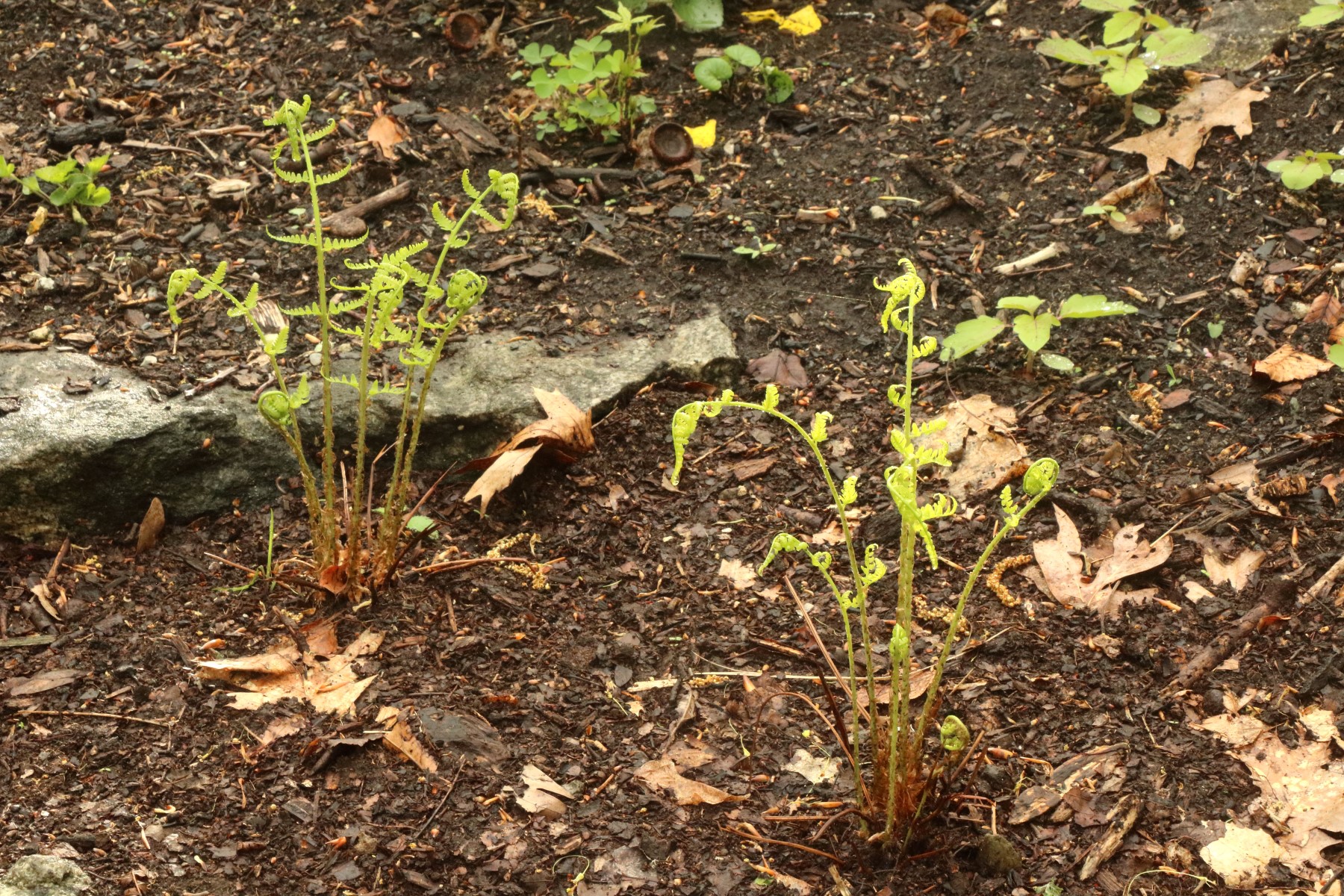
(Marginal Wood Fern)
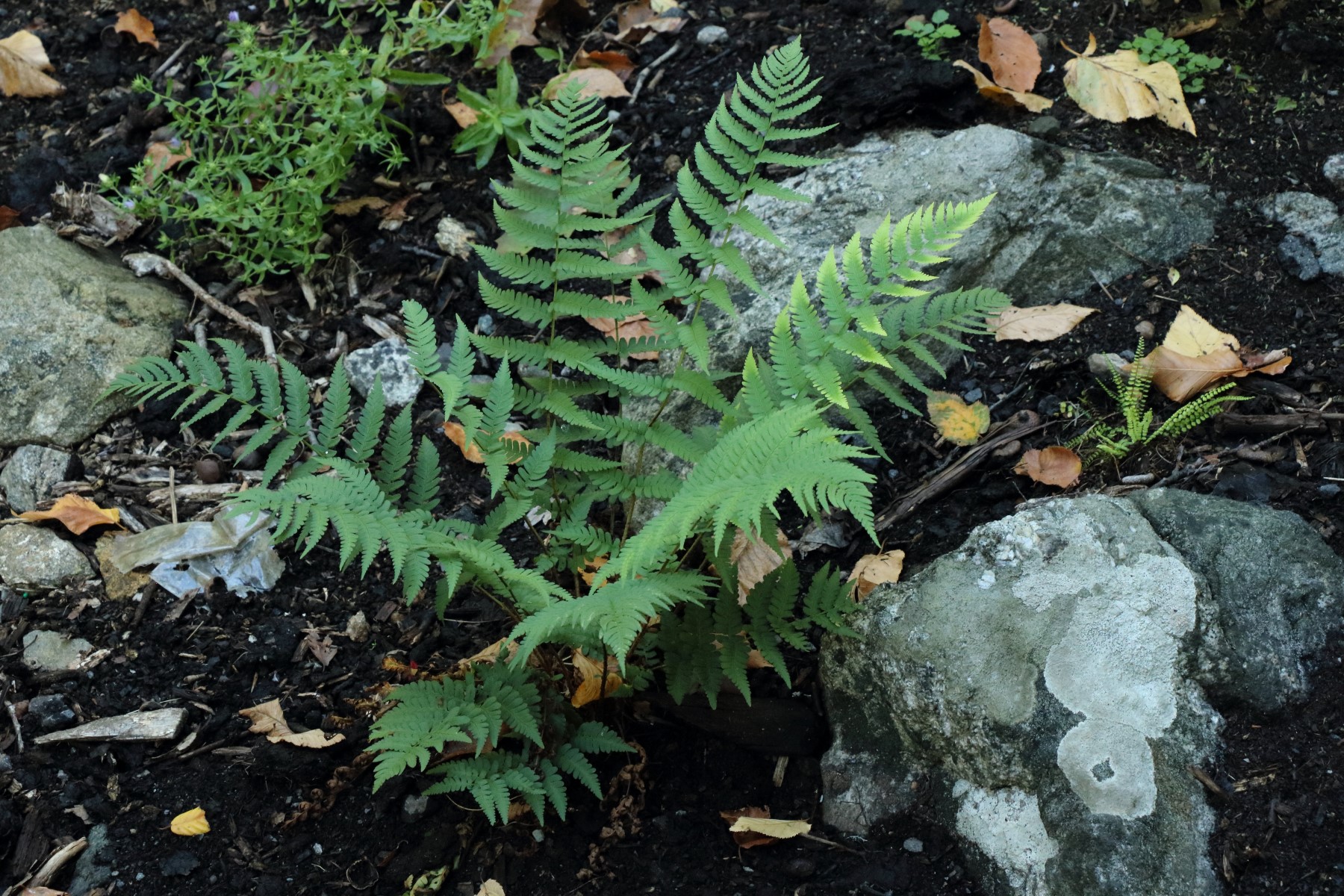
typical vase shape
Goldie’s Wood Fern
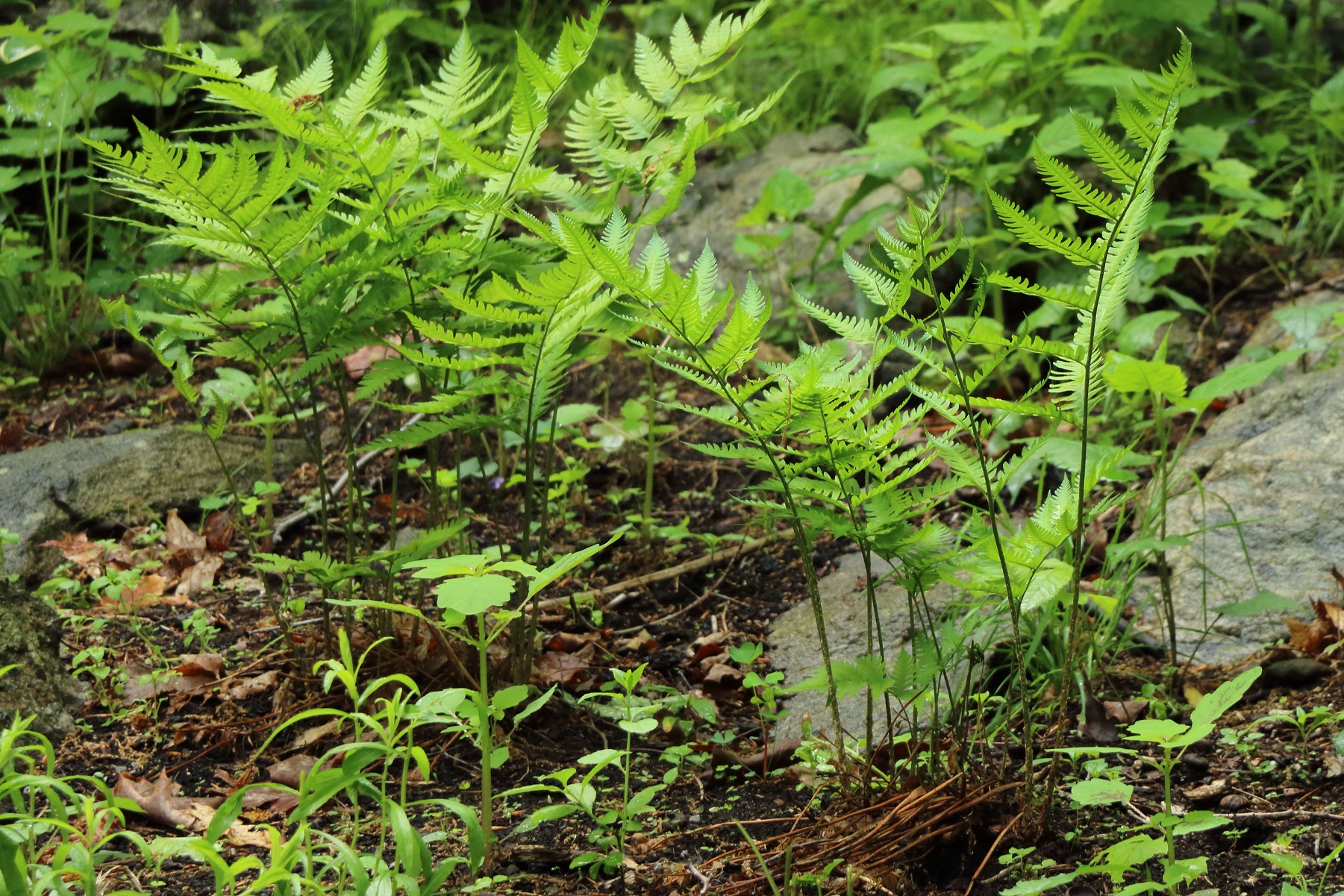
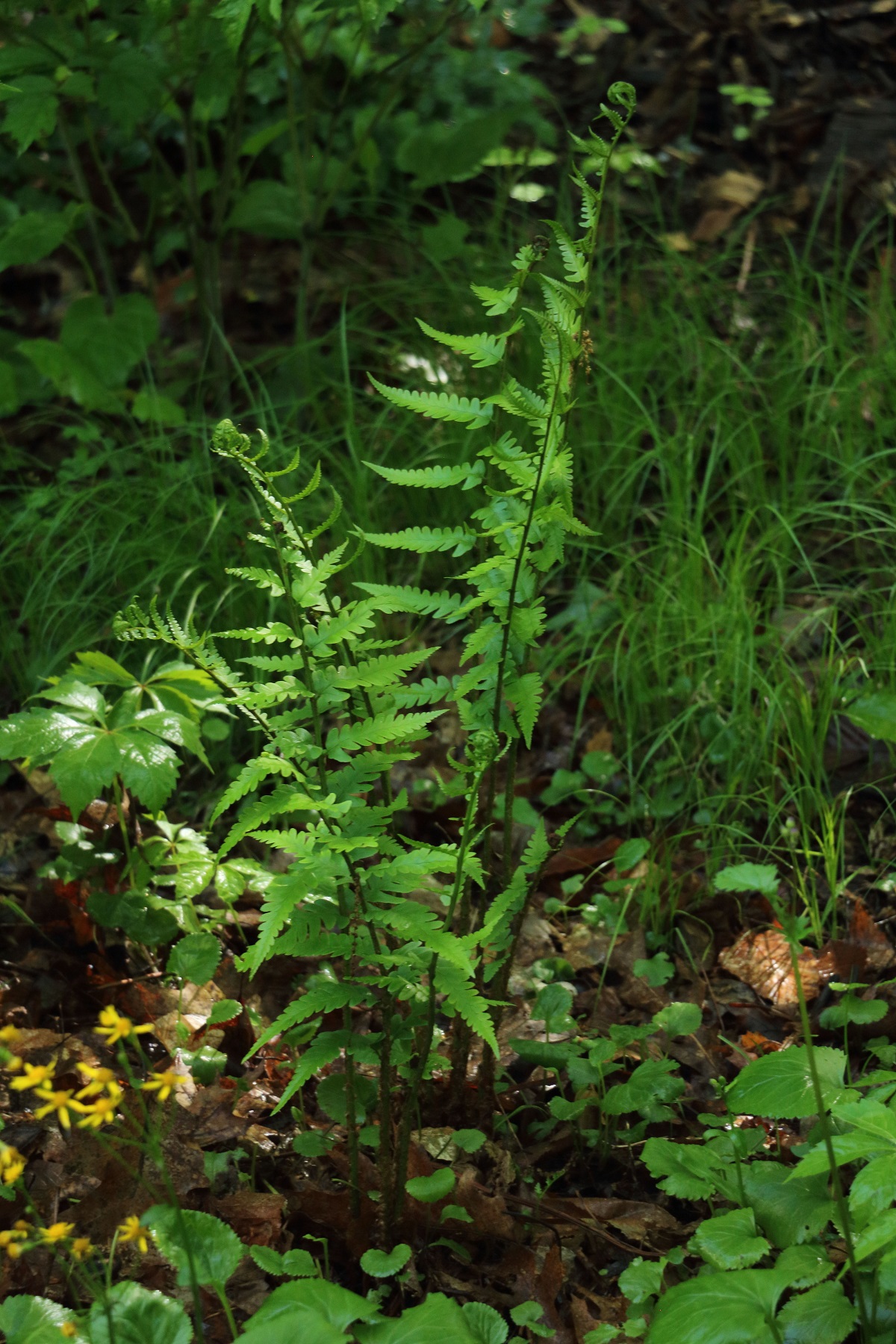
Lady Fern is a graceful compact fern around 2′ that forms nice clumps and spreads very slowly by rhizomes. The variety ‘Lady in Red’ is especially showy with contrasting light green fronds with dark burgundy red stems. We are trying to build a nice colony of this fern by dividing clumps every couple of years. Unfurling fiddleheads are also very showy.
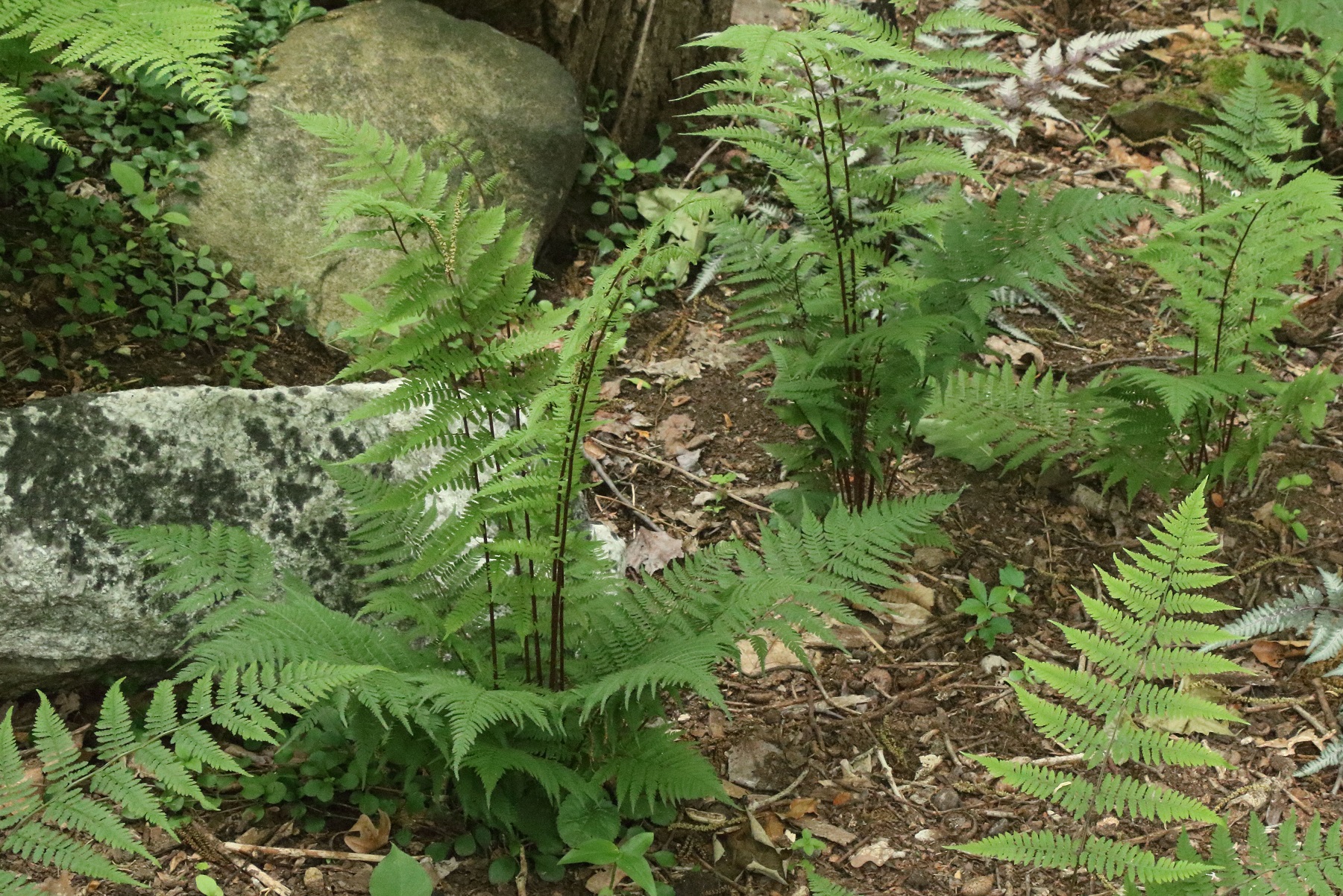
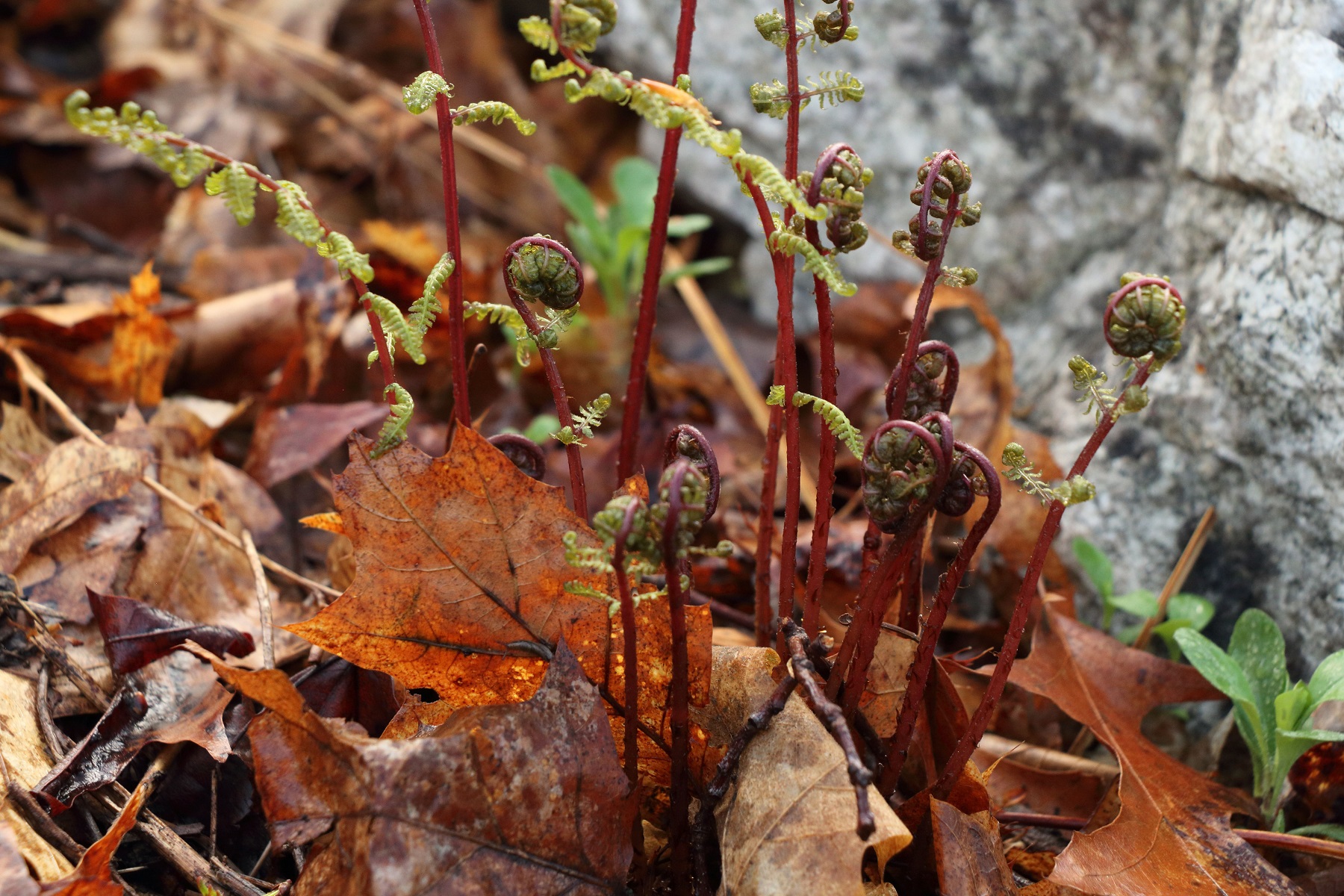
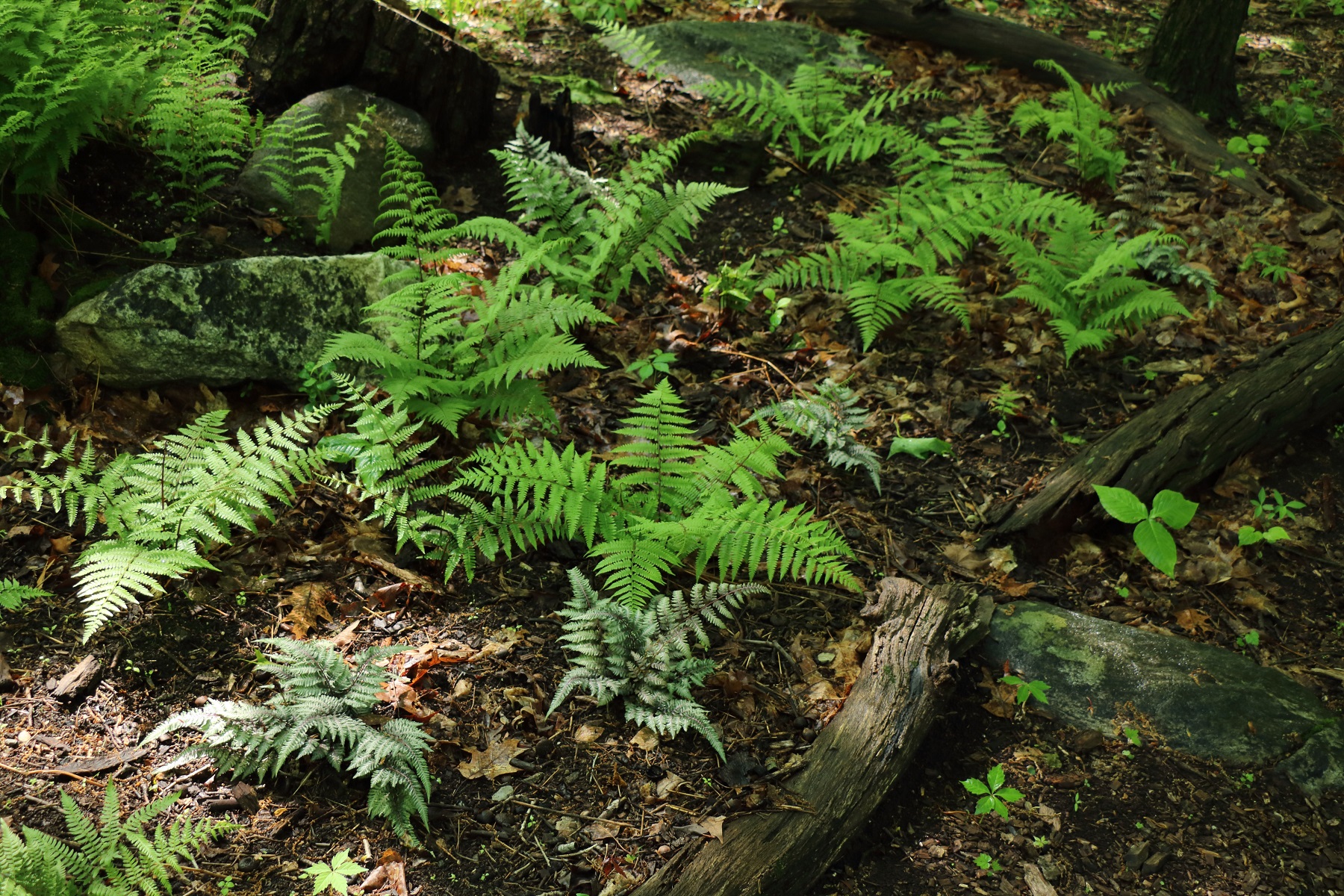
Northern Maidenhair Fern
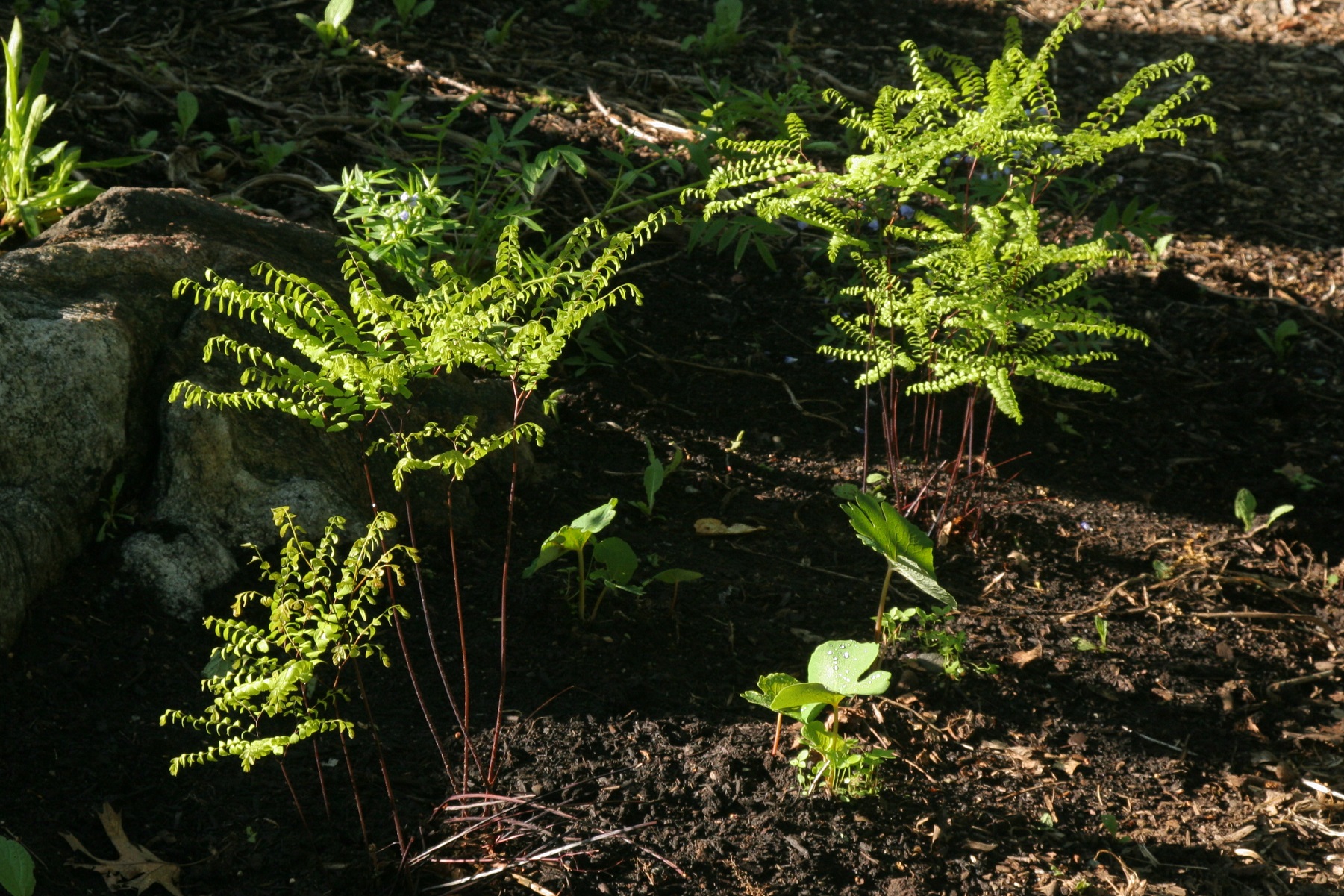
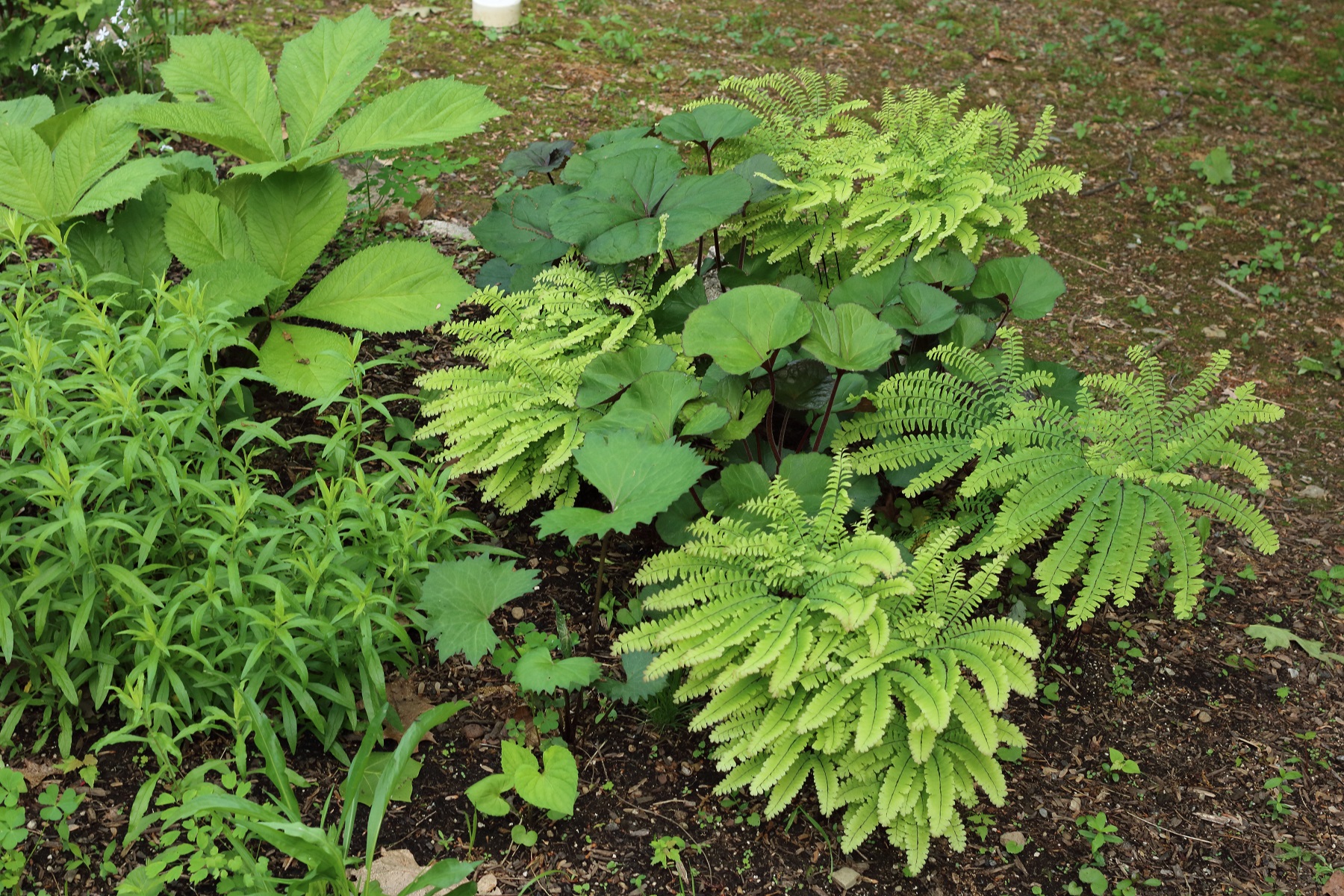
with Ligularia and Rodgersia
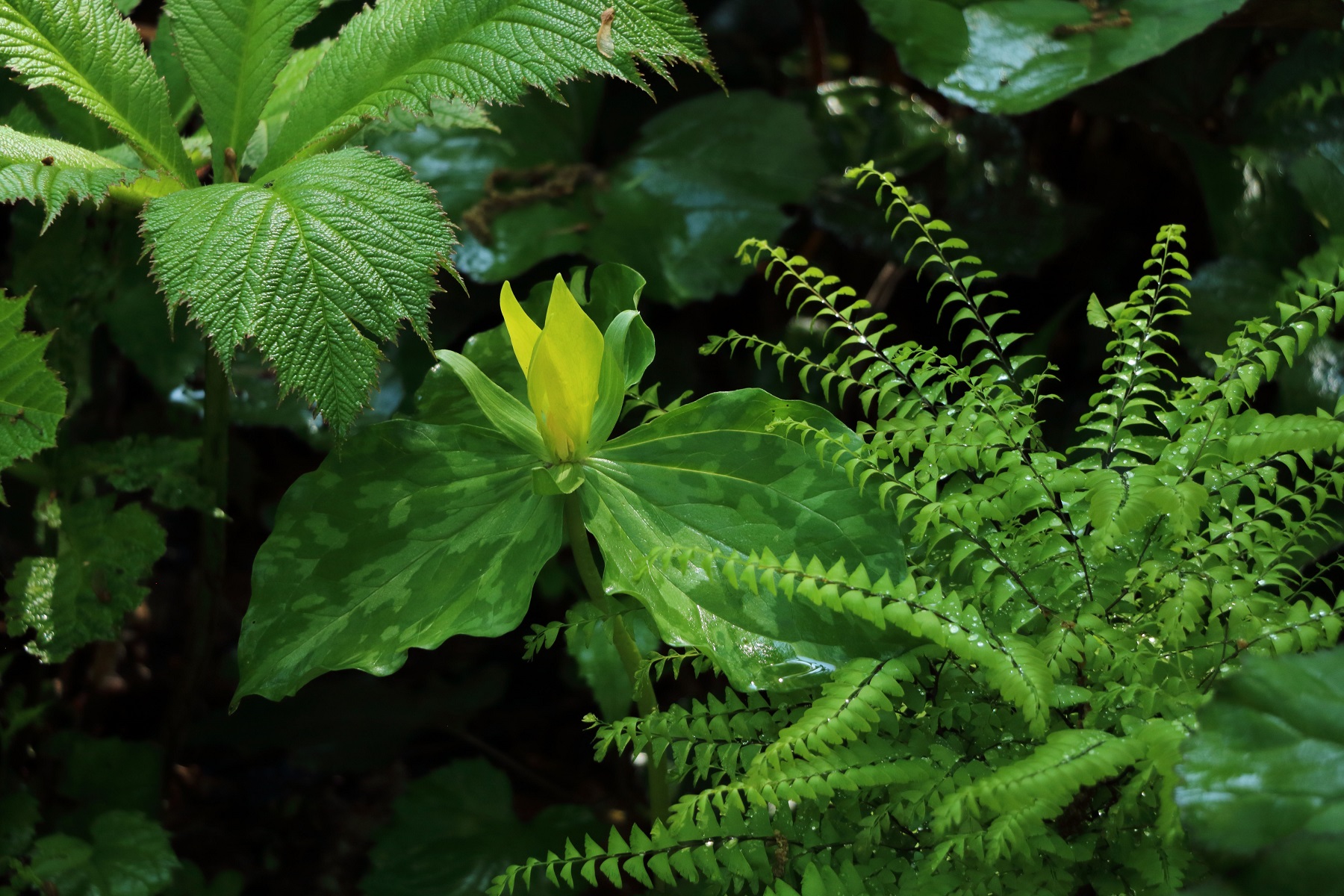
with Trillium and Rodgersia
Maidenhair Spleenwort
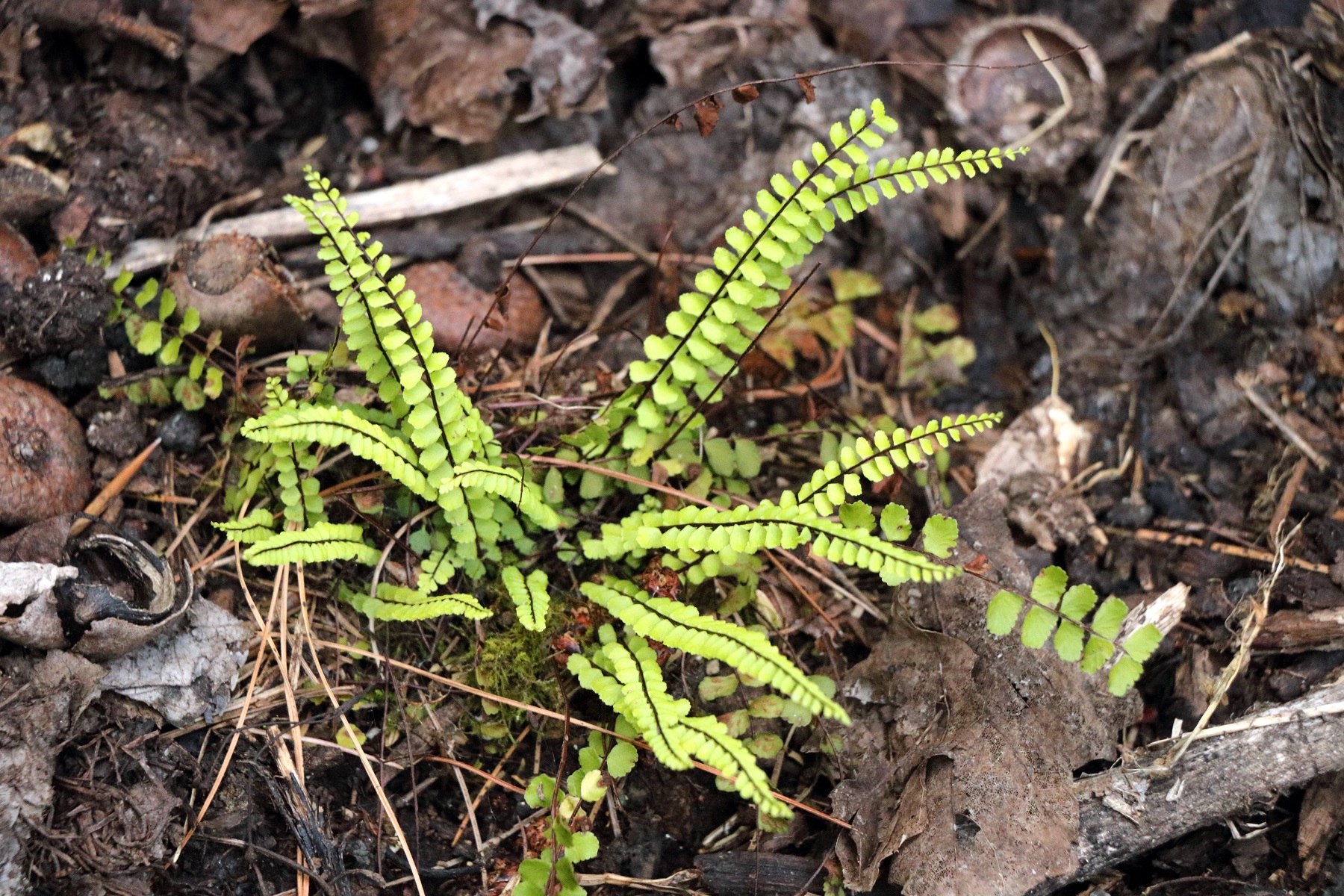
Netted Chain Fern
Netted Chain Fern is a species you won’t find at many nurseries. With luck you will find it at a native plant sale. The sterile fronds are broad and look very similar to Sensitive Fern, but it is the thread-like fertile fronds, and the contrast they exhibit together with the sterile ones that makes this fern truly outstanding. It is slowly spreading where happy.
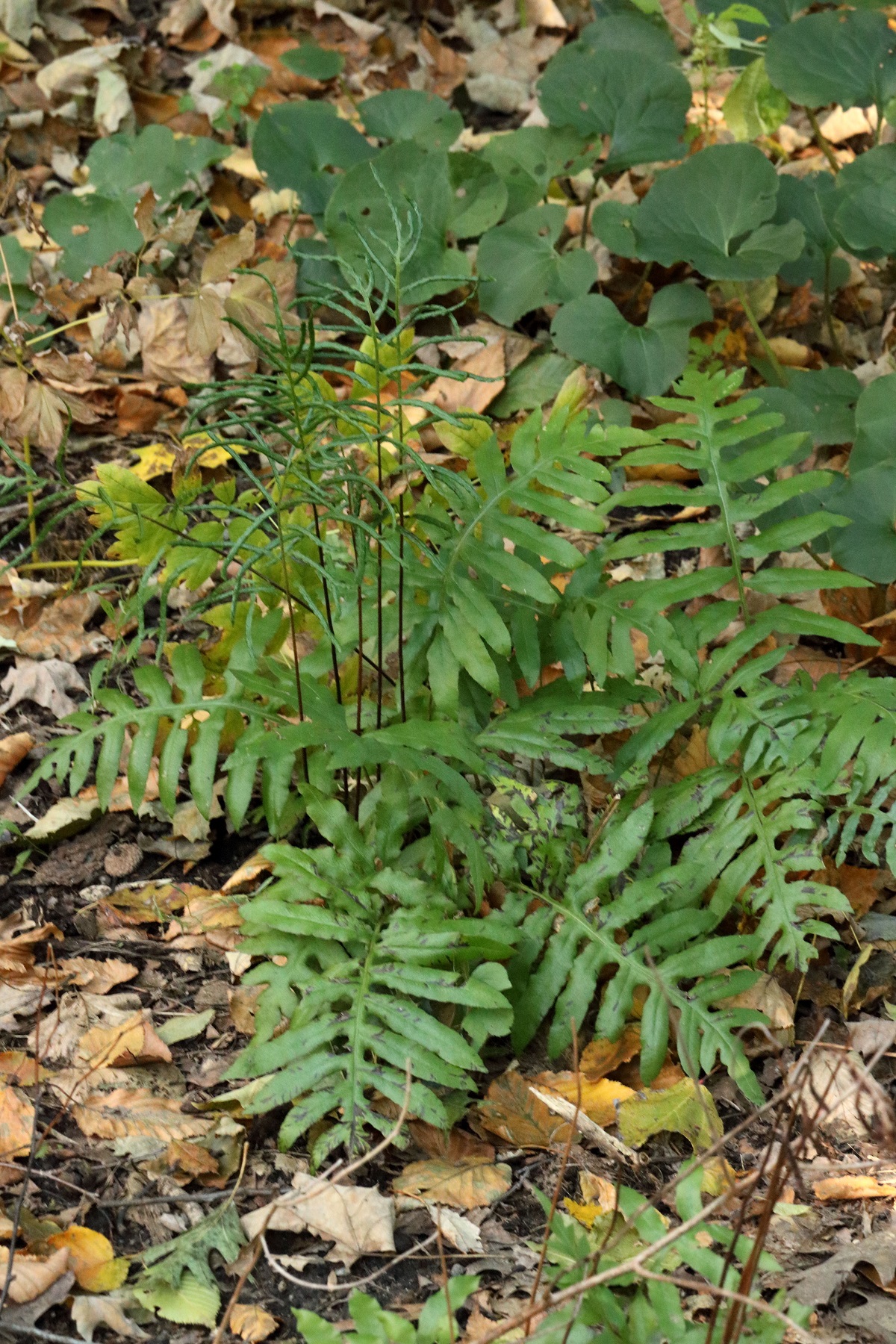
Northern Oak Fern
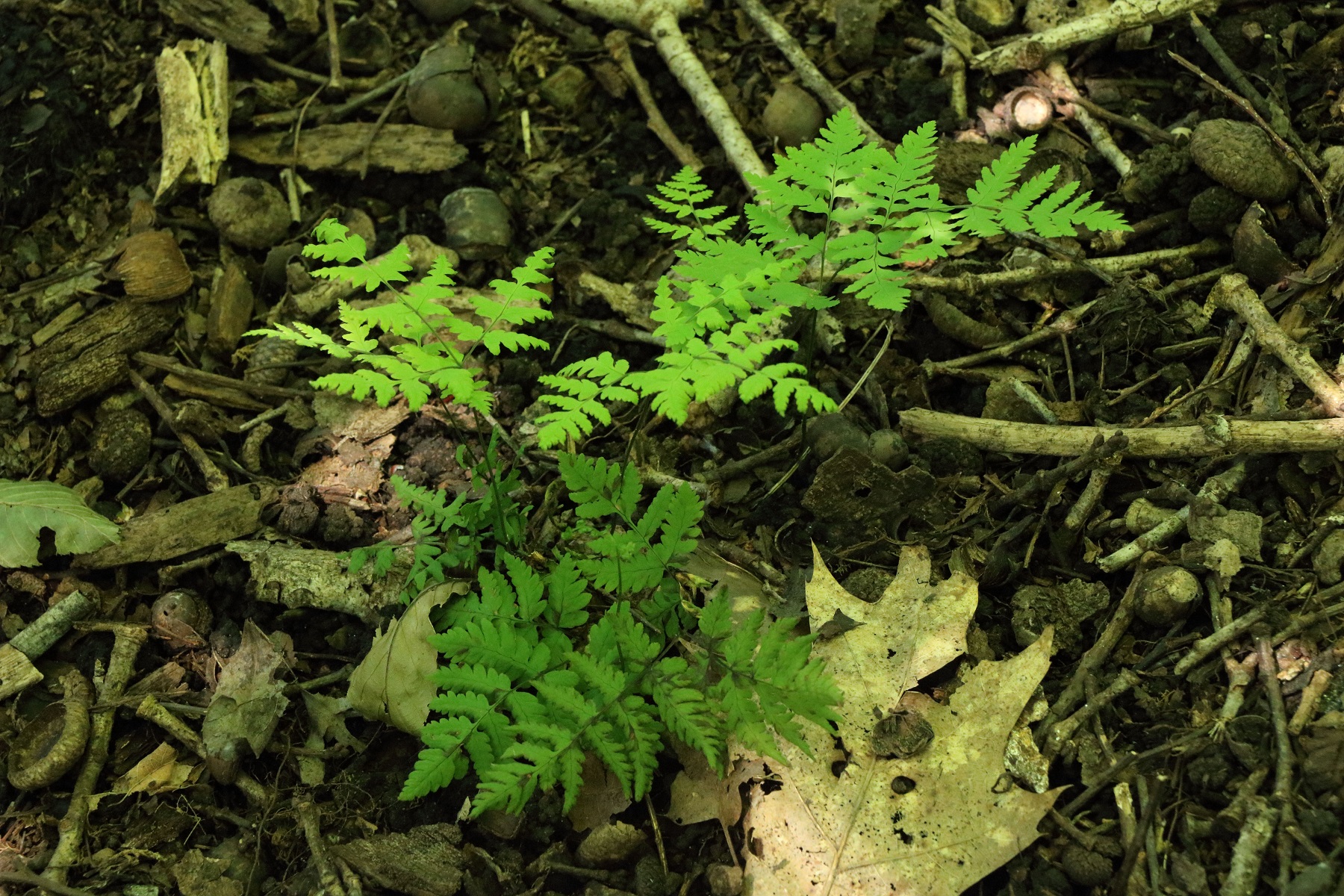
Rock Polypody
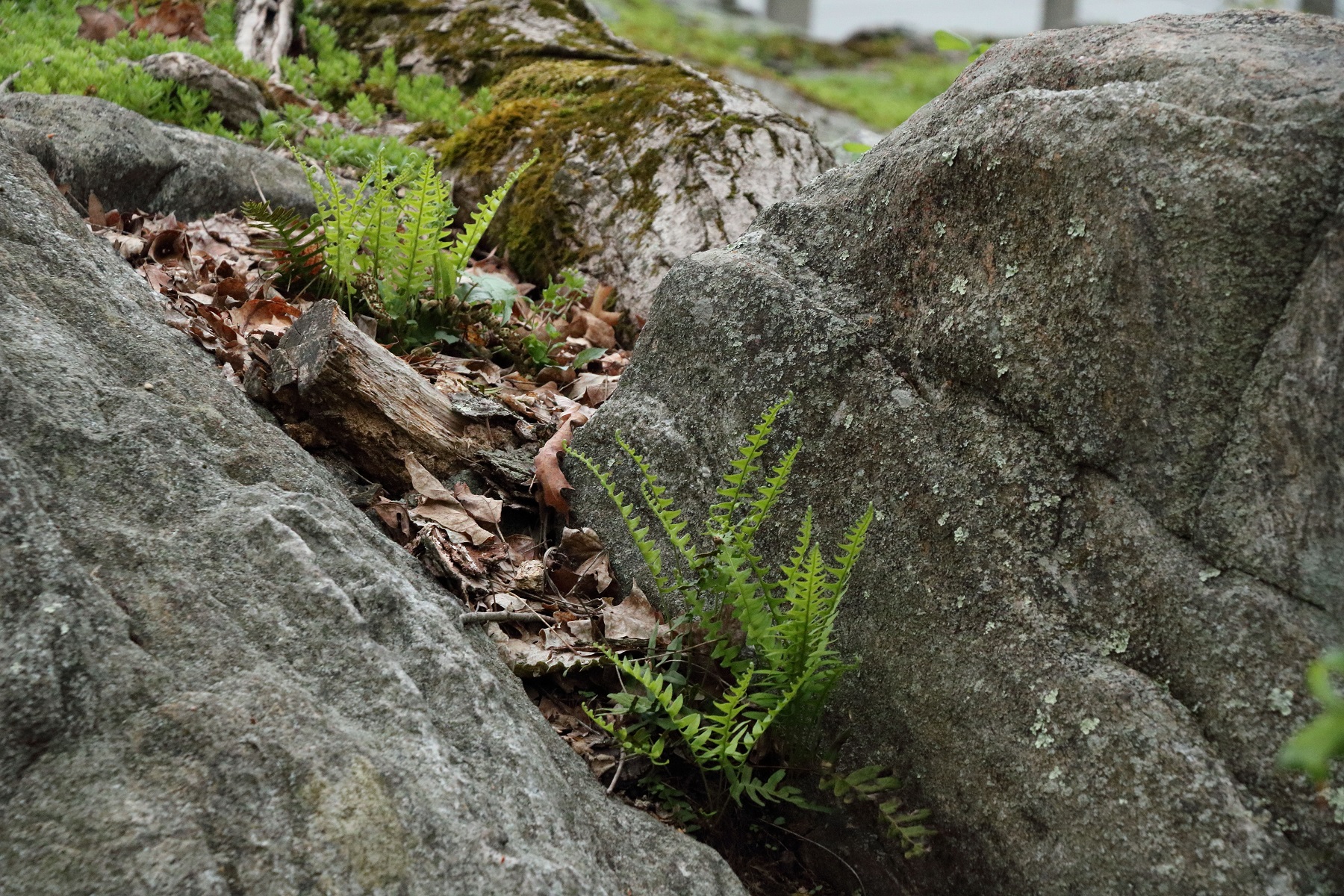
Hartford Fern
What is not to like about a native evergreen fern with a true climbing habit? Hartford Fern was the first species in America on the endangered species list because people collected this vine at Christmas time for Christmas decoration purposes. It is quite cute, with palm-like sterile fronds and diminutive fertile fronds. On our property it has only reached a length of maybe 2′. In the wild it is expected to climb up to 15′.

And finally one non-native Fern suggestion:
Himalayan Maidenhair Fern
